New, 4.6 Magnitude Quake Hit Sisak Area
ZAGREB, 6 April, 2021 (Hina) - An earthquake measuring 4.6 degrees on the Richter scale rocked the areas of Sisak and Petrinja just before 11am Tuesday, the European-Mediterranean Seismological Centre said.
The epicentre of the quake, which occurred at 10.54am, was 24 kilometres south of Sisak.
The newest quake coincide with the 354th anniversary of the most devastating earthquake ever recorded in Croatia which hit Dubrovnik in 1667. The intensitiy of that quake was IX on EMS98 scale.
For more about earthquakes in Croatia, follow TCN's dedicated page.
Tourist Boards in Zagreb County Develop Gourmet and Cultural Tourism
January 19, 2021 – Tourist boards in Zagreb County are uniting in two projects – to develop and promote cultural and gourmet tourism.
The new Law on Tourist Boards and the Promotion of Croatian Tourism encourage the tourist boards' association, both project-wise and formally. Local and regional tourist boards, as well as tourist boards and local self-government units that do not have an established tourist board for their area, may join a project (agreement) association.
Many tourist boards have already taken advantage of this opportunity, such as the Zadar Archipelago and Southern Istria tourist boards, and more recently, the tourist boards in Zagreb County.
Namely, they unite to promote and develop cultural and gourmet tourism. As the Zagreb County Tourist Board director Ivana Alilović points out, their goal is to intensively promote the Zagreb Green Ring region and existing tourist products and programs.

Scene from Zagreb County / Romeo Ibrišević, Zagreb County Tourist Board
"Our goal is integrated quality management of the Zagreb County's tourist destination product, which will reduce the gap between the level of quality that tourists expect and the level of quality that the destination can provide and deliver. Also, we want to improve the quality and content of Zagreb County tourism product, increase tourist satisfaction and tourist spending in Zagreb County and the benefits for entrepreneurship in catering and tourism," says Alilović.
Gourmet tourism in Zagreb County
Local tourist boards of Jastrebarsko, Samobor, and Sveti Ivan Zelina cities have concluded an agreement on the local Zagreb County Tourist Boards' association. In this first project, the joint activity will be the development of gourmet tourism. Wine roads and cheese roads are among the many tourist attractions of rural, eno, and gastro tourism of Zagreb County.
Vineyards and wine cellars in Zagreb County are located on three wine roads – Plešivica Wine Road, Zelina Wine Road, and Samobor Wine Road. Along wine roads, you can find Purtugizec Plešivica and Kraljevina Zelina wines from the Zagreb County brand, as well as Bermet, a traditional and widely recognized Samobor aromatized wine.
Also, there are wines produced from indigenous varieties Plavec yellow, sweet Zelenac, and Šipelj, and many other wines such as Chardonnay, Sauvignon, black, gray, and white Pinot, Rhine Riesling, Traminer, Frankovka, Škrlet, yellow Muscat, Šipon.
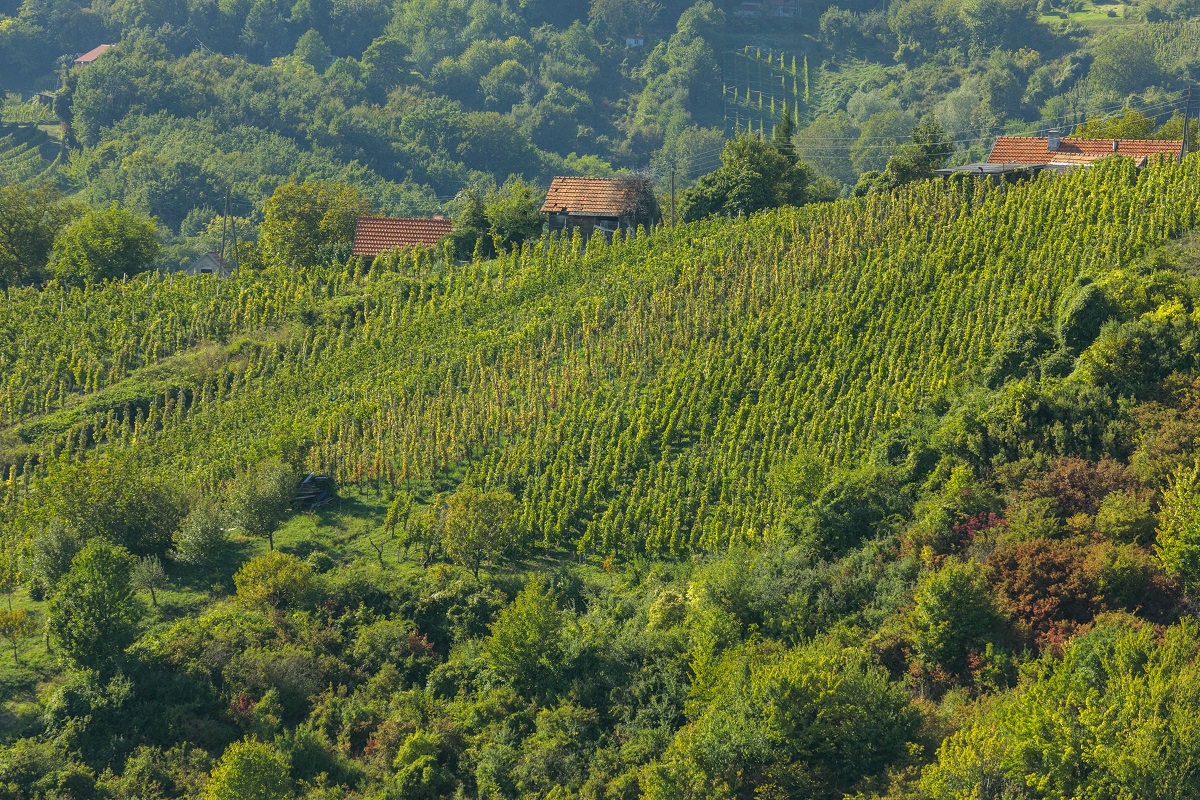
Vineyards in Jastrebarsko / Copyright Romulić and Stojčić
The main goals of the association through the gourmet tourism project are:
- The smart specialization of Zagreb County.
- The development of a tourist destination for gourmet tourism.
- Improving the value chain of gourmet tourism.
- Digitalization and application of new technologies.
- Multi-sector connectivity.
- Development of local production systems (Agri-food).
- Positioning and promotion of Zagreb county.
Cultural tourism in Zagreb County
Cultural tourism in Zagreb County is based on protected natural heritage and cultural and historical heritage. Zagreb County has a rich treasury of natural heritage and beauty. It has many protected natural areas, which contribute to the development and success of cultural, hiking, picnic, and sustainable tourism in Zagreb County.
The association project aims to establish a basis for the integrated management of cultural tourism. Alilović says they want to create a recognizable tourist destination product that will be the main instrument for encouraging tourism competitiveness in Zagreb County. She adds that cultural resources are the leading destination's product in the promotion of a tourist destination, and what makes one destination different from the other is its intangible cultural heritage.
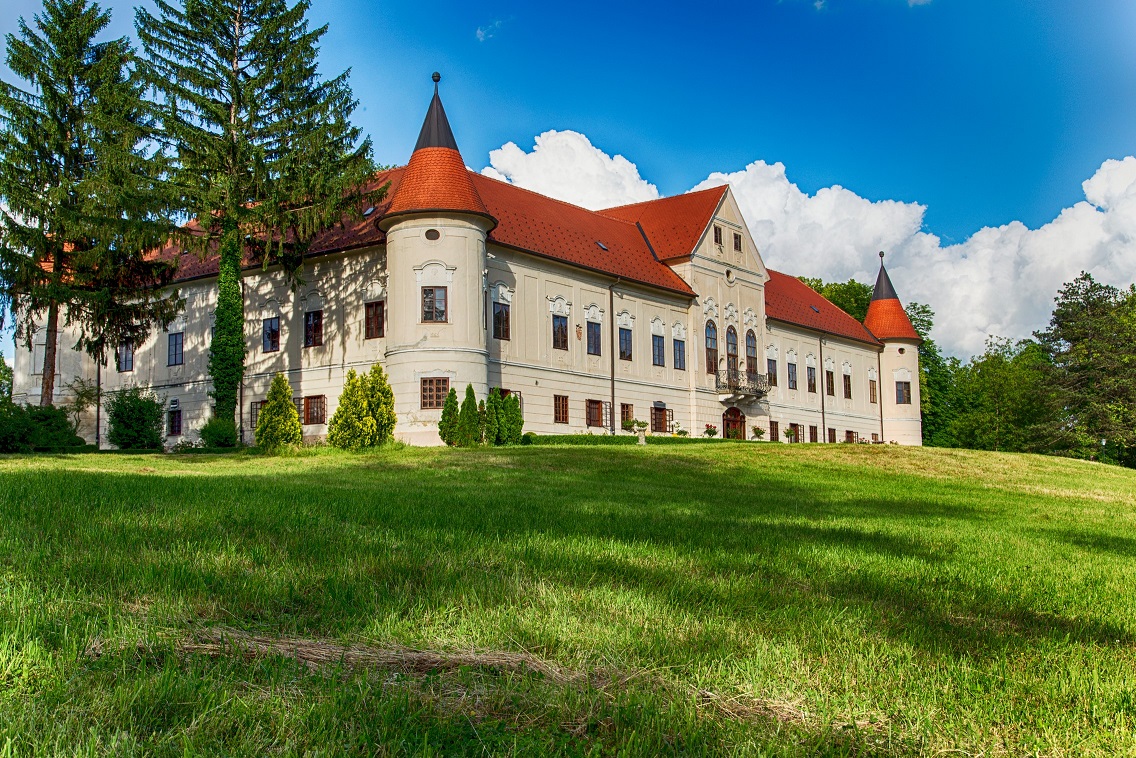
Lužnica Castle, Zaprešić / Zagreb County Tourist Board
"Heritage is the essential element by which a tourist destination's management attracts tourists to the destination. It is an attractive basis for branding. Creativity based on traditional intangible heritage thus pushes the boundaries of the mere functionality of a product.
Through the example of a cultural thematic route, we seek to show how myth can become a potential attractive basis for the development of mythological tourism in Zagreb County. The thematic route's stories and locations offer a choice according to criteria of collective and personal importance. Therefore, the thematic route is an open system that can be toured individually or organized with expert tourist guidance.
Special attention was given to the local identity. For example, the customs of St. George and St. John were highlighted, as well as other customs that are traditionally woven into the Zagreb County and surrounding regions," says Alilović.
The tourist offer of Zagreb County abounds in cultural and historical heritage, such as stories and legends, wooden construction, sacral construction, indigenous architecture, and archaeological finds and monuments of its rich past.
Zagreb County can also boast more than 200 cultural and historical heritage sites. Among them, castles Novi dvori Jelačićevi are a unique example of a complete manorial-economic complex preserved to this day. Then there are forts, manor houses, rich wooden sacral heritage, of which the most prominent is the chapel of St. Barbara in Velika Mlaka. A beautiful example of autochthonous secular architecture is the manor house (curia) Modić-Bedeković in Donja Lomnica. A special attraction is the memorial room of Alojzije Stepinac in Krašić.
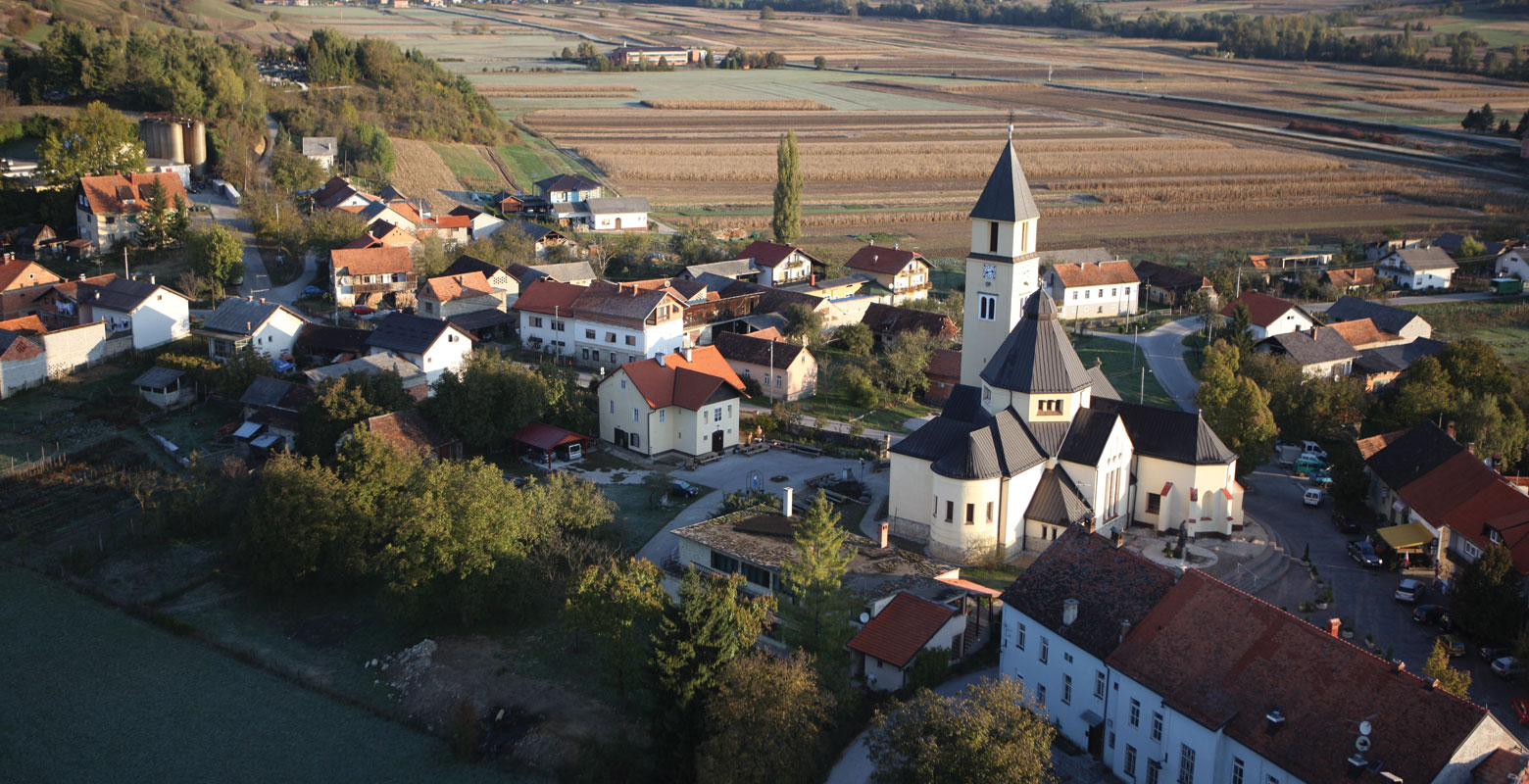
Krašić, Zagreb County / Zagreb County Tourist Board
Valuable is the archeological finds in Ščitarjevo, not far from Velika Gorica, and Budinjak (10th-6th centuries BC), one of the most important prehistoric archaeological sites in Croatia.
The project area includes the tourist boards of the cities of Zaprešić, Velika Gorica, Vrbovec, and Dugo Selo, the tourist boards of the municipalities of Pisarovina and Krašić, and the tourist board of area of the Sava-Sutla valley and hills.
"Agreements of project association in the Zagreb County Tourist Board are an example of planned activities. It is clear that the destination through joint action has the opportunity to better position itself in the market and develop projects that will stimulate overall economic development," said Alilović.
Alilović concludes that the association should result in numerous synergy effects. Not only in quality but also much-needed cost-effectiveness of promotion and project implementation.
For the latest travel info, bookmark our main travel info article, which is updated daily.
Read the Croatian Travel Update in your language - now available in 24 languages.
Join the Total Croatia Travel INFO Viber community.
Varazdin Old Town Nominated For Croatia's Second European Heritage Label
January 11, 2021 – Comparable to UNESCO's World Heritage List, the European Heritage Label is given to sites that have played a significant in the history, culture and values of Europe. If successful, Varazdin Old Town will be only the second site in Croatia to receive the classification
They say that Northern Croatia has more castles, fortresses and stately homes than any other region in the country. And they are probably right. Not that the names and locations of all are widely known either in the country, and certainly not outside. Truth be told, some of the structures included on Northern Croatia's list of important buildings have lain derelict for centuries. In others, the decline has been more recent. The best way to preserve such buildings seems to come from reimagining them for contemporary use, rather than simply preserving them in aspic or amber.
That is something that Varazdin Old Town does extremely well. All of Northern Croatia's famous castles do this well - Čakovec castle, Trakošćan, Veliki Tabor and Gornja Stubica. It's the reason they are famous. By opening up their doors as museums and event spaces, they attract hundreds of thousands of visitors each year and they get to tell their stories. And the story of Varazdin Old Town makes it perfect for the European Heritage Label.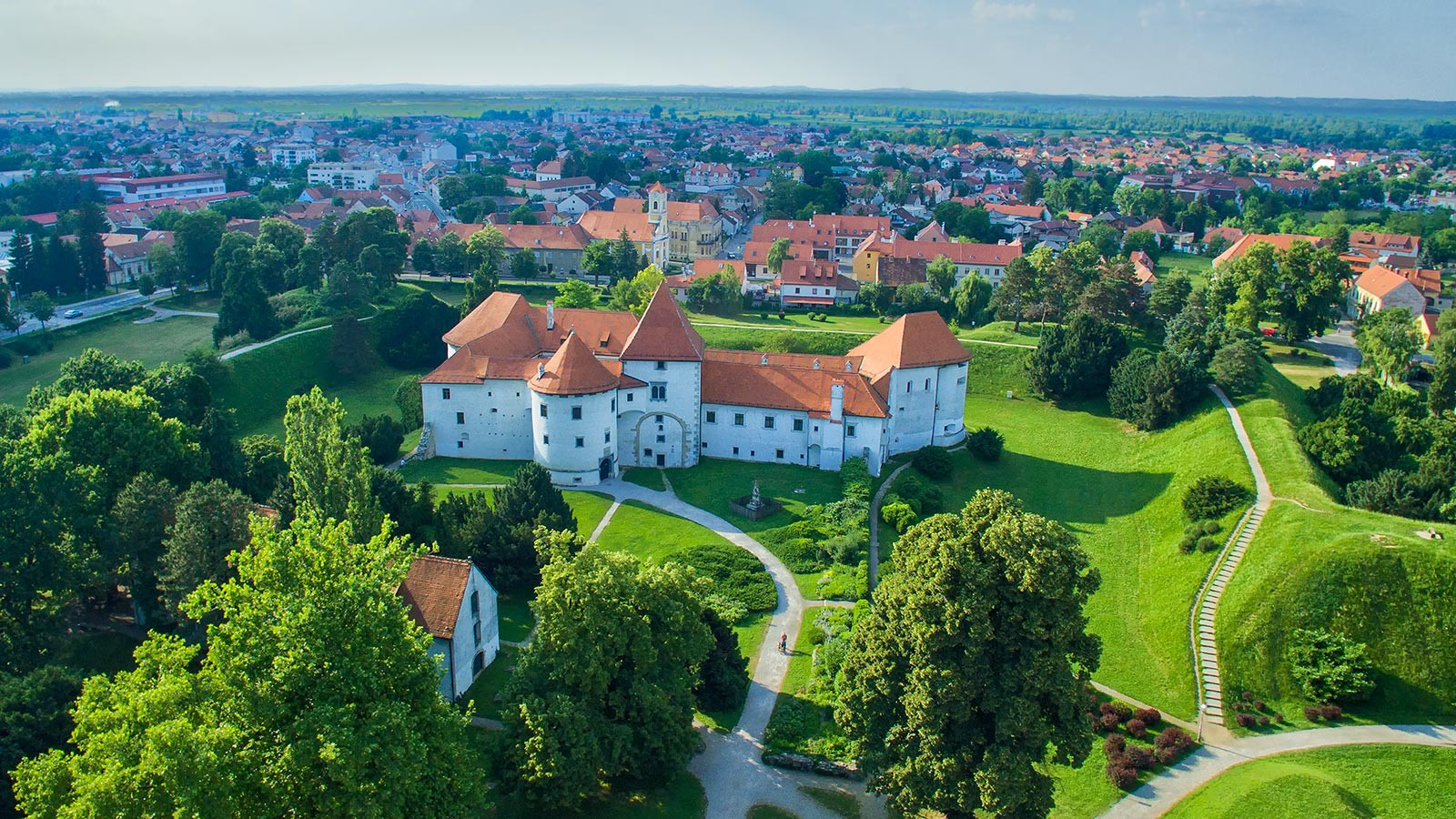 © Ivo Biočina / Croatia National Tourist Board
© Ivo Biočina / Croatia National Tourist Board
Varazdin Old Town is today inhabited by the Varaždin City Museum. They give guided tours around the fortress that was once the full extent of Varazdin Old Town. This city museum is the best way to learn about Varazdin's extraordinary buildings, culture and history. The museum has undertaken this role, and that of preserving items from Varazdin's past, since 1925. It has four permanent exhibitions and six major departments – Archaeology, History, Cultural History, Ethnographical, Entomology and the Gallery of Old and Contemporary Masters, some of which are inside the Old Town fortress itself.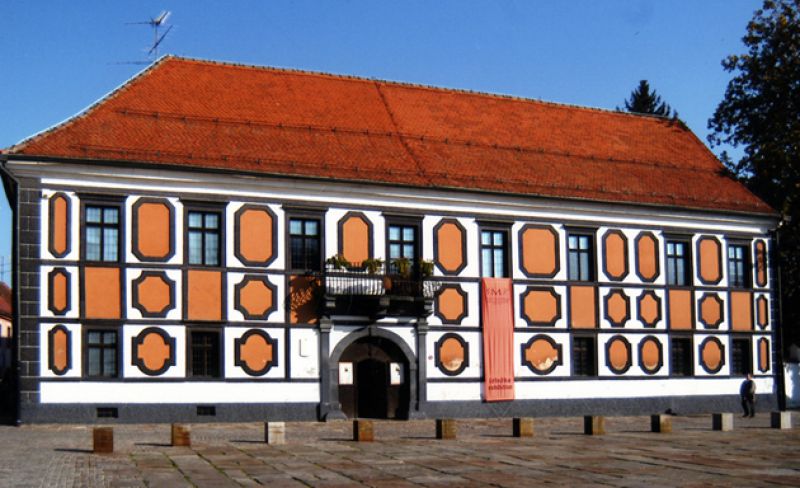 The Gallery of Old and New Masters of Varaždin City Museum © City of Varazdin Tourist Board
The Gallery of Old and New Masters of Varaždin City Museum © City of Varazdin Tourist Board
The Old Town fortress itself is medieval in origin, its construction having begun in the 14th century. Its Gothic towers were added a century later and the collection of buildings was remodelled and added to right up to the 19th century, in response to its inhabitants and its purpose.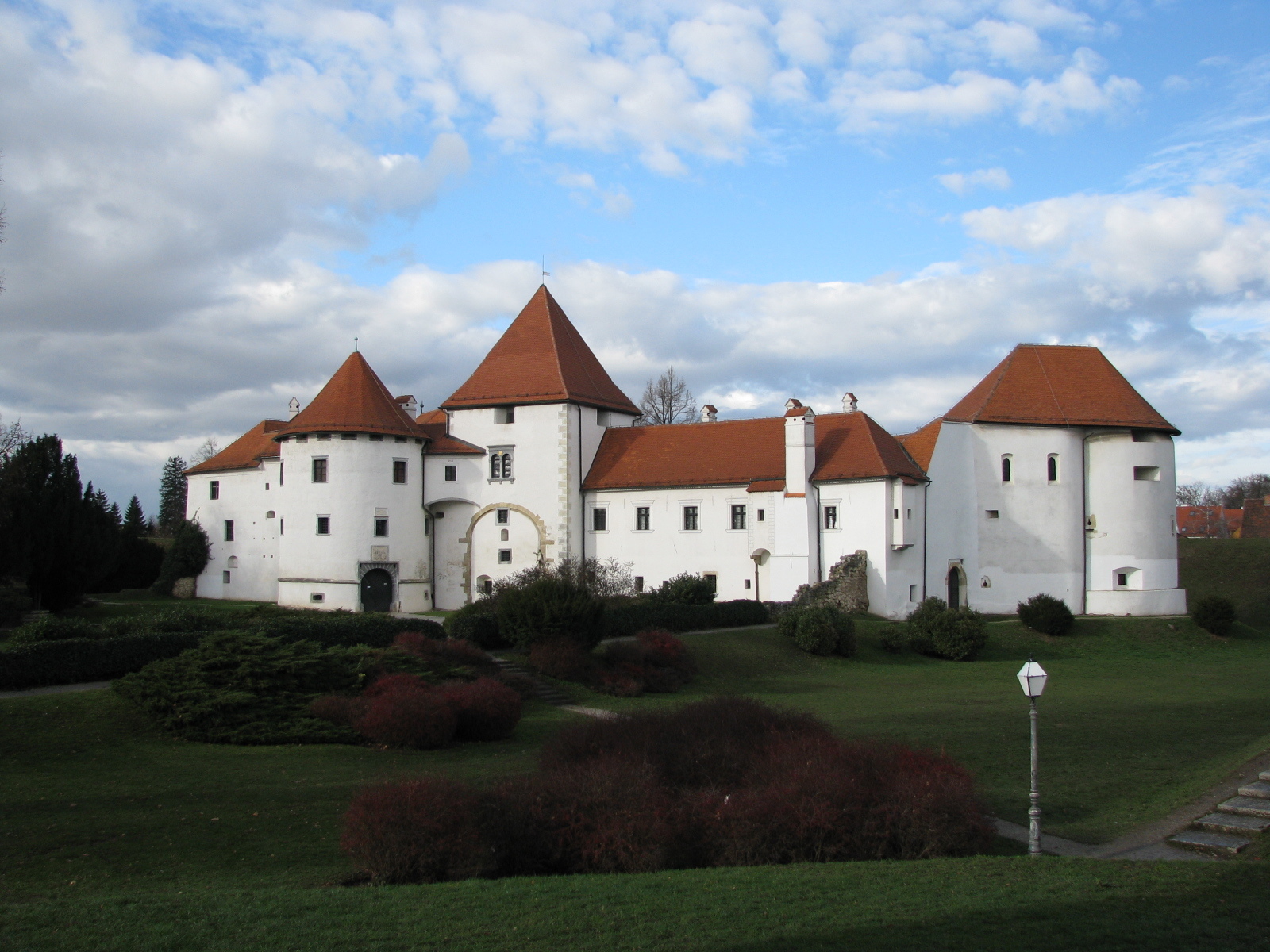 © Ex13
© Ex13
For defence against the Ottomans in the 16th century, it was reconstructed as a Renaissance fortress – high earthen walls with bastions were added, and a double moat. During the past, many noble families have lived here - the Counts of Celje, John Ungnada, George of Brandenburg and Croatian Ban Thomas Erdödyja and his successors. Indeed, Varazdin was once the capital city of Croatia, ruled from these very buildings. In its changing use, architecture and occupancy lies the story of not only the development of Croatia but that too of Europe and it is this that makes Varazdin Old Town eligible for the European Heritage Label.
The European Heritage Label is awarded to sites that bring to life the European narrative and the history behind it. The European Heritage label is currently awarded only every two years. So far, the only site in Croatia to receive the European Cultural Heritage Label from the European Commission is the Neanderthal Museum in Krapina. Its label was awarded in 2015. The Neanderthal Museum in Krapina, also in Northern Croatia. It received its European Heritage Label in 2015 © Zeljko Filipin
The Neanderthal Museum in Krapina, also in Northern Croatia. It received its European Heritage Label in 2015 © Zeljko Filipin
PHOTOS: Changing Face of Historic Petrinja - How It Used To Look
January 12, 2021 – The pictures of Sisak-Moslavina after the earthquake of late 2020 tell a terrible tale. Sitting close to the epicentre, the town of Petrinja was badly damaged. Once the main town of the area, this is not the first tragedy it has undergone. Nor is it the only tragedy it will overcome. The devastating pictures we currently see are not the real Petrinja. These images are temporary. Historic Petrinja has survived the attack of invading armies, of changing politics and regimes. It has rebuilt, kept its heart and retained its community. The following pictures remind us of historic Petrinja through the ages – how it once was, and how it will be again
"From 1991 to 1995 we were occupied," one resident of historic Petrinja tells TCN of his remembrances of the Homeland war. "Here and near Karlovac was the closest they got to Zagreb. If you think about it, that's really close. The town was devastated. My street was burned almost completely to the ground. My house included. I think maybe 5 houses in the whole street survived. That's from a total of around 50."
Were these houses destroyed by guns attacking the occupiers or by those occupying the town? (your interviewer asks, perhaps naively)
"Ha! (a dry laugh) They were destroyed by those occupying the town".
Why would anyone do that to a town that they wanted to be part of their country?
"For over 20 years I ask myself the same question, Marc. I still do not have an answer to this day. They burned half of the city immediately after the occupation began. We saw our town burning to the ground. I was just a child at this time, my family fled to Sisak."
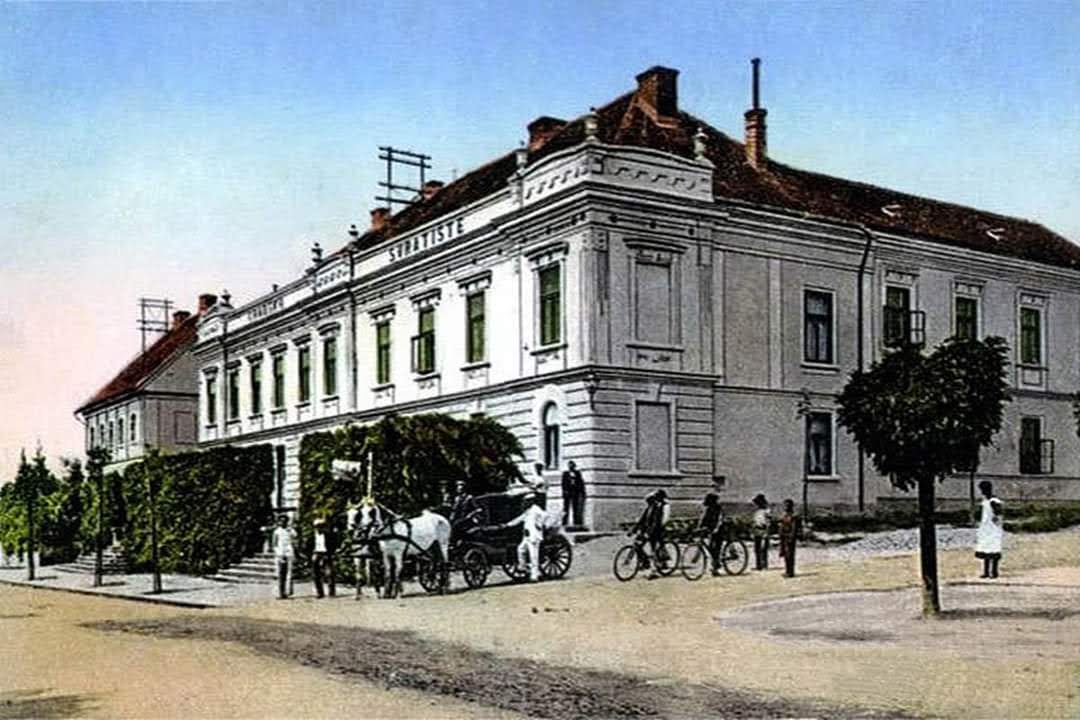 Croatian Home (Hrvatski Dom). At the time of this image, the building was located on Banska street. Today, it is known as Matije Gupca street
Croatian Home (Hrvatski Dom). At the time of this image, the building was located on Banska street. Today, it is known as Matije Gupca street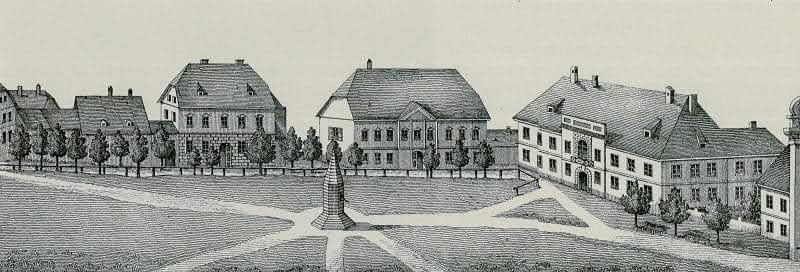
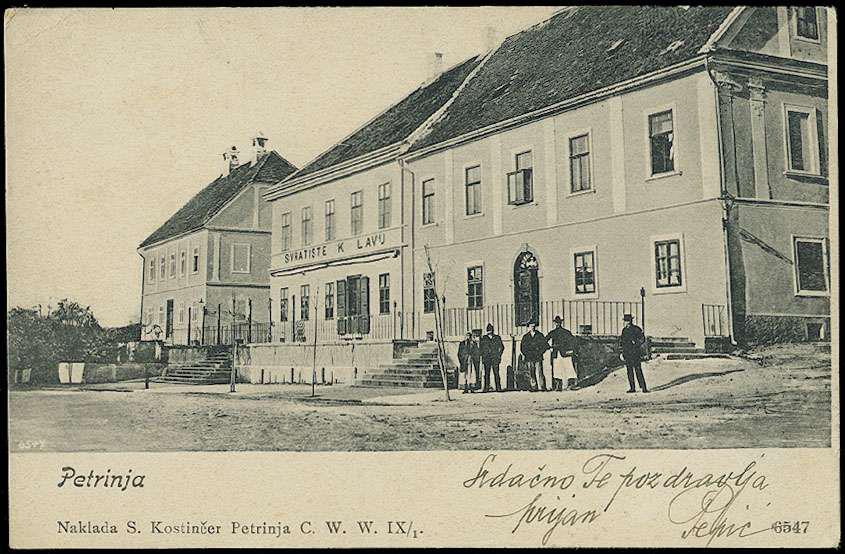
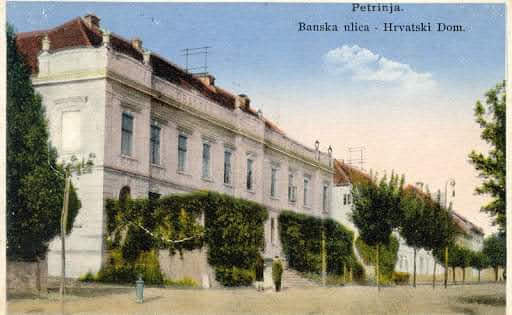
Croatian Home (Hrvatski Dom) on Banska street (today's Matije Gupca Street)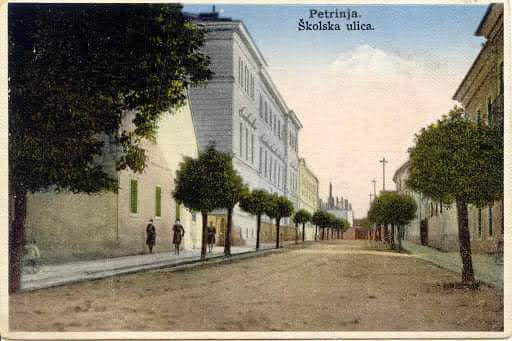
Formerly Školska street, this street is today known as Gundulićeva
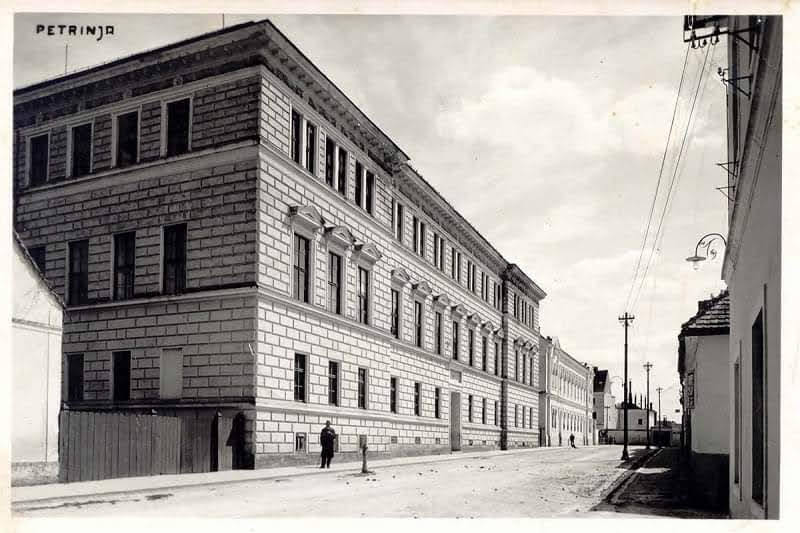
Today's secondary school building, formerly a teacher training school and a grammar school on Školska street (today's Gundulićeva)
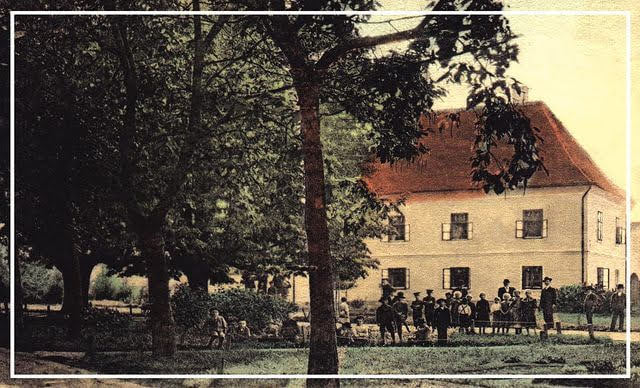
View of the former town courthouse from Petrinja town park
The town of Petrinja occurs where the river Petrinjčica meets the river Kupa , about 13 km southwest of Sisak and about 48 km southeast of Zagreb. Historic Petrinja is the capital of an area today known as Banija or Banovina (both are correct). The prefix 'Ban' refers to the title of a royal appointed 'duke', or similar, who used to run the area (or not) when it was part of the Austrian empire.
Many people have travelled very far to help the relief efforts since the earthquake of late December 2020. Because some people have no homes, no electricity, no food, no jobs, no heat. And it is the middle of winter. Others stay at home and argue online about whether the area should be referred to as Banija or Banjovina. How - and if - you judge such a debate is entirely your choice.


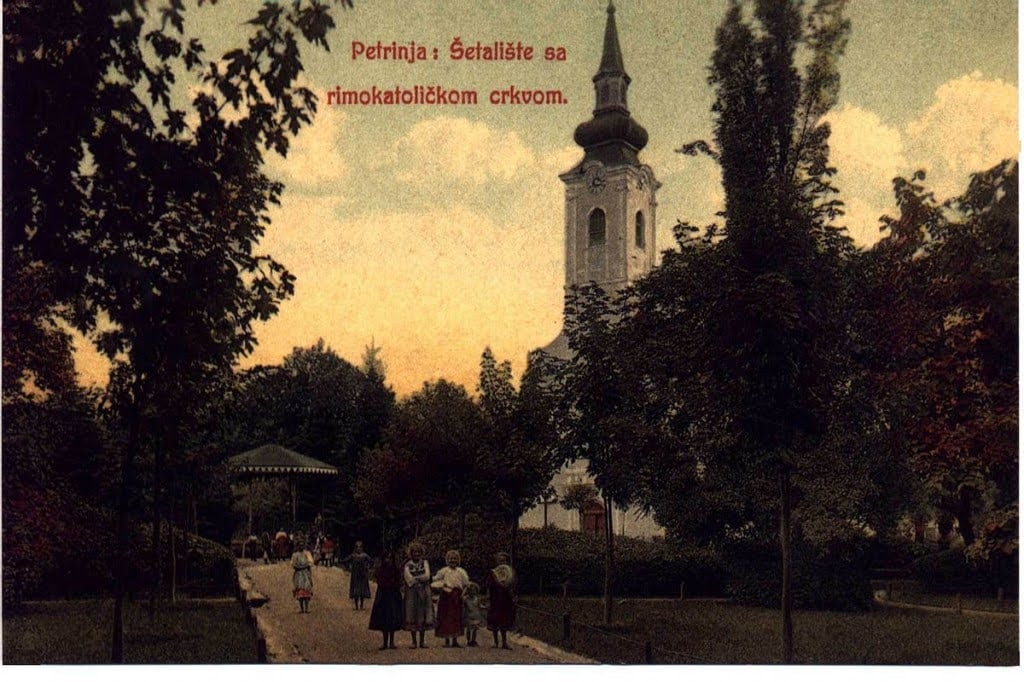
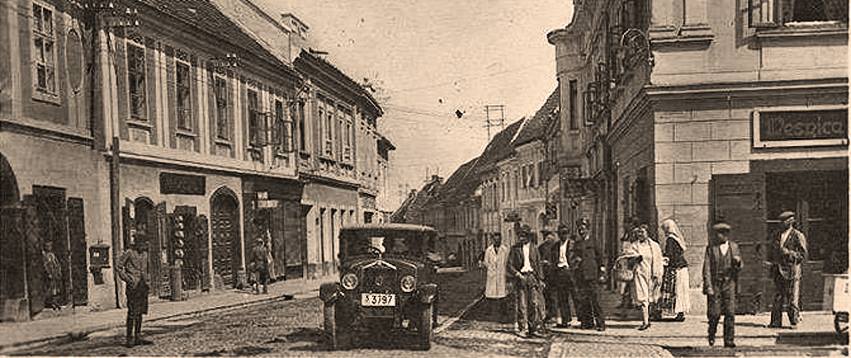
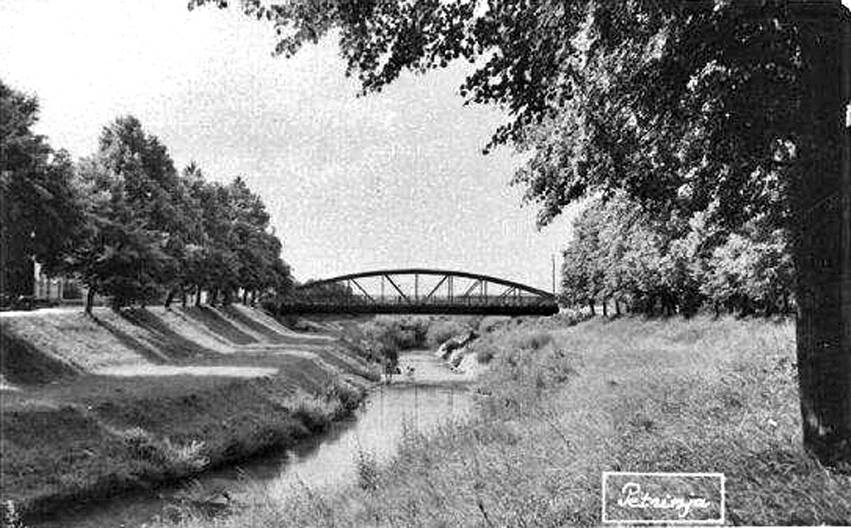
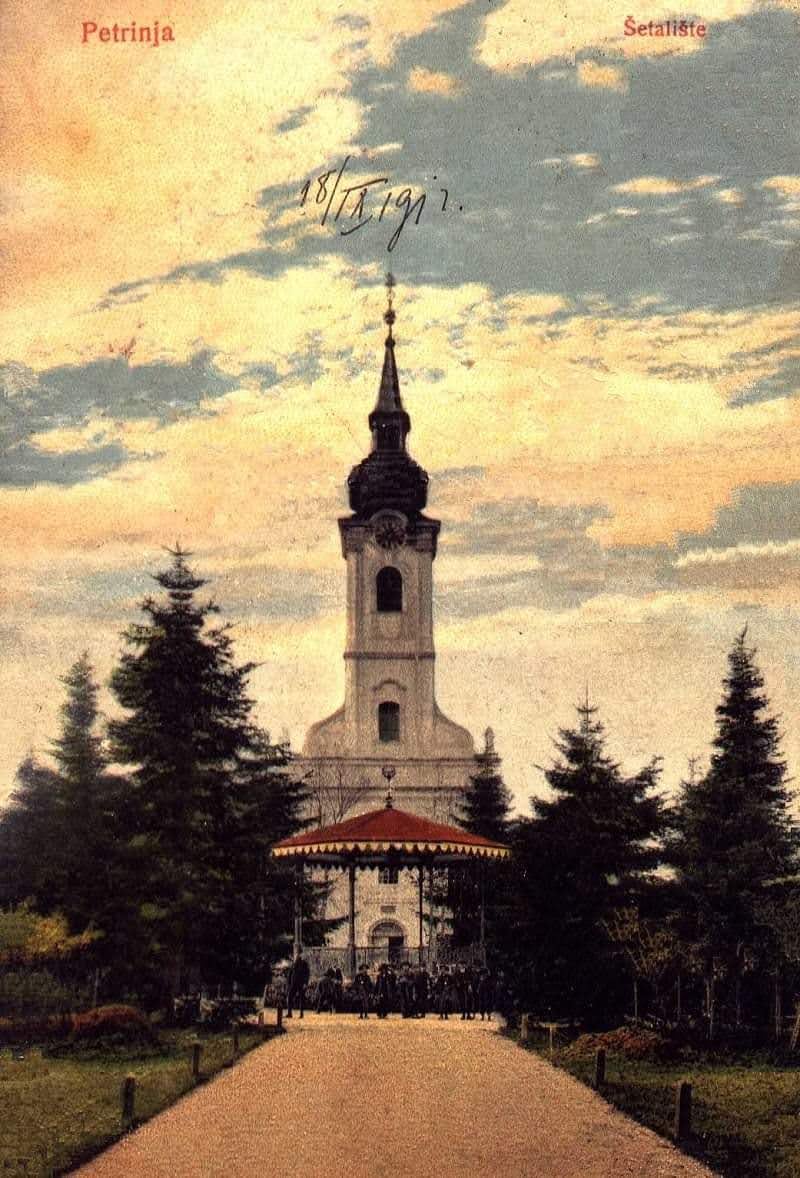 Church of St. Lawrence in the town park
Church of St. Lawrence in the town park
After fleeing from the invading ottomans, the Gavrilović family located in the area of historic Petrinja during the mid 17th century. In the year 1773, the Empress Marija Teresa decided Petrinja would be a centre of craft guilds, including the butcher's guild, of which the Gavrilović family were a part.
In the early 1800s, the Gavrilović family became the main suppliers of meat for Napoleon’s troops located here, on the former military frontier. By 1883, long after the departure of the French, the Gavrilović meat factory employed 50 people and slaughtered 50 pigs a day. It became Croatia's first salami, sausages and cured meats factory.
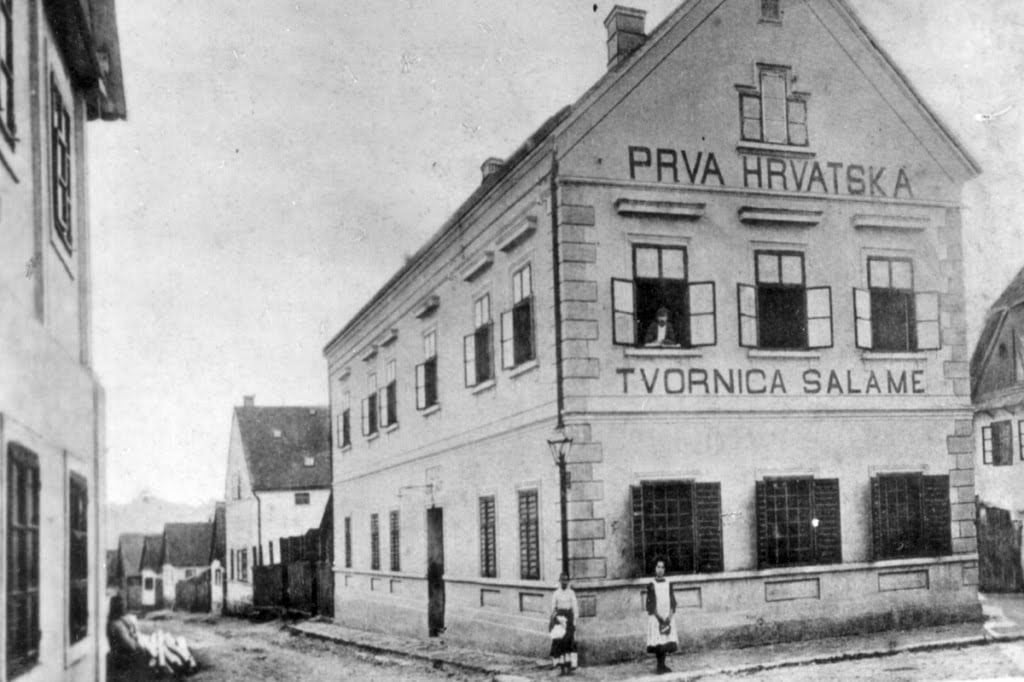 Croatia's first salami factory on Srnakova / Gundulićeva street
Croatia's first salami factory on Srnakova / Gundulićeva street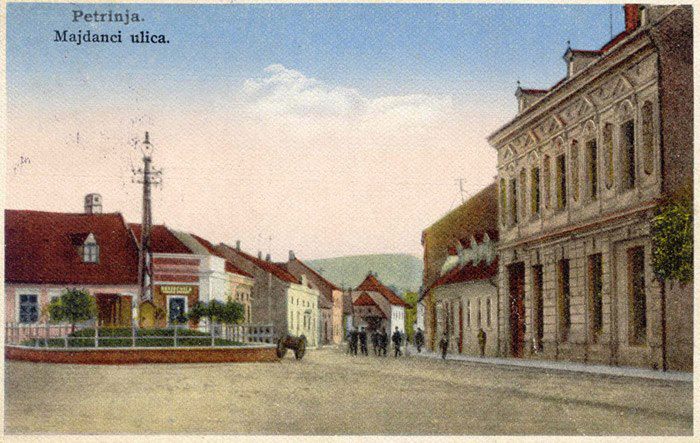

Iron bridge over the river Petrinjčica, Matije Gupca Street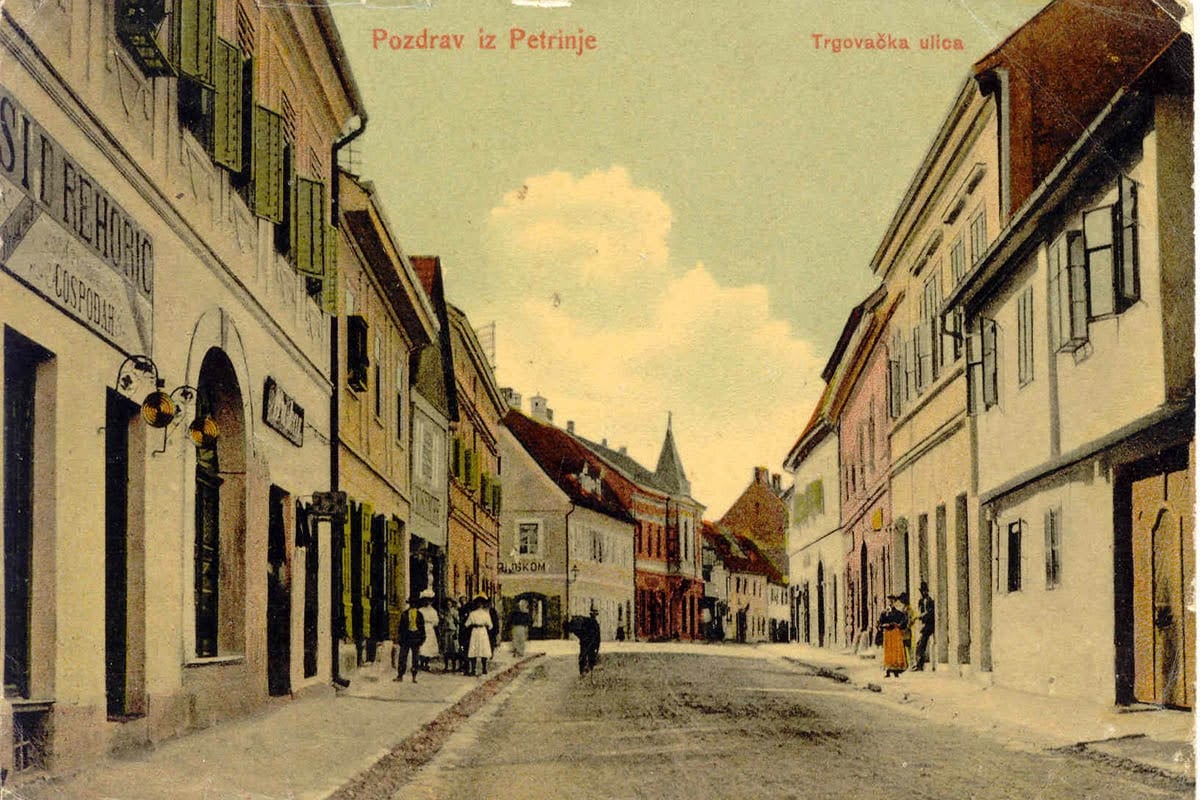 Trgovačka street, today known as Nazorova street
Trgovačka street, today known as Nazorova street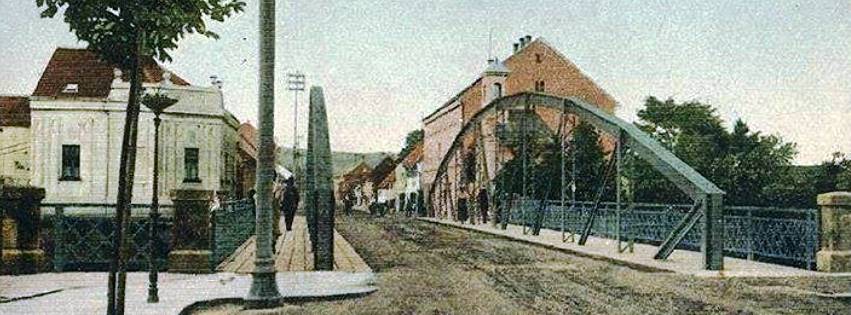
The town dates back to at least the 13th century, as does its first fortifications, built to stand against the invading Tartars. The city was granted free royal status during this time for its defence against these invaders
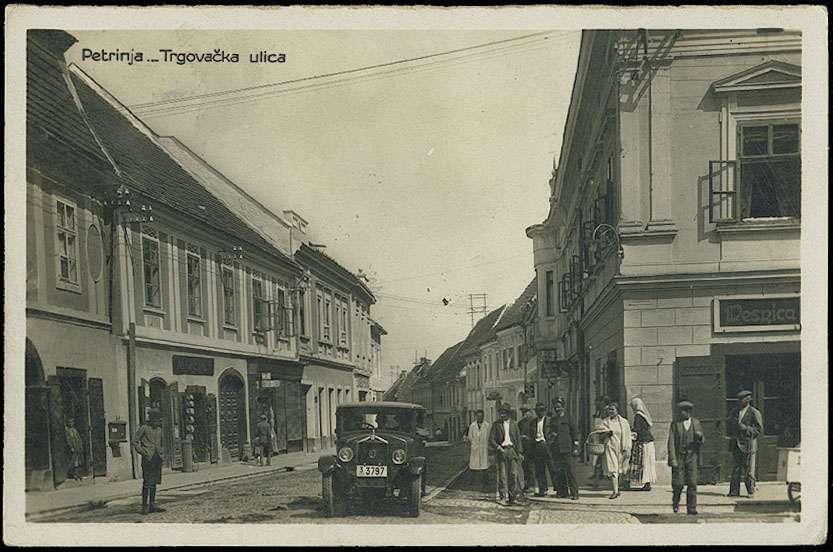
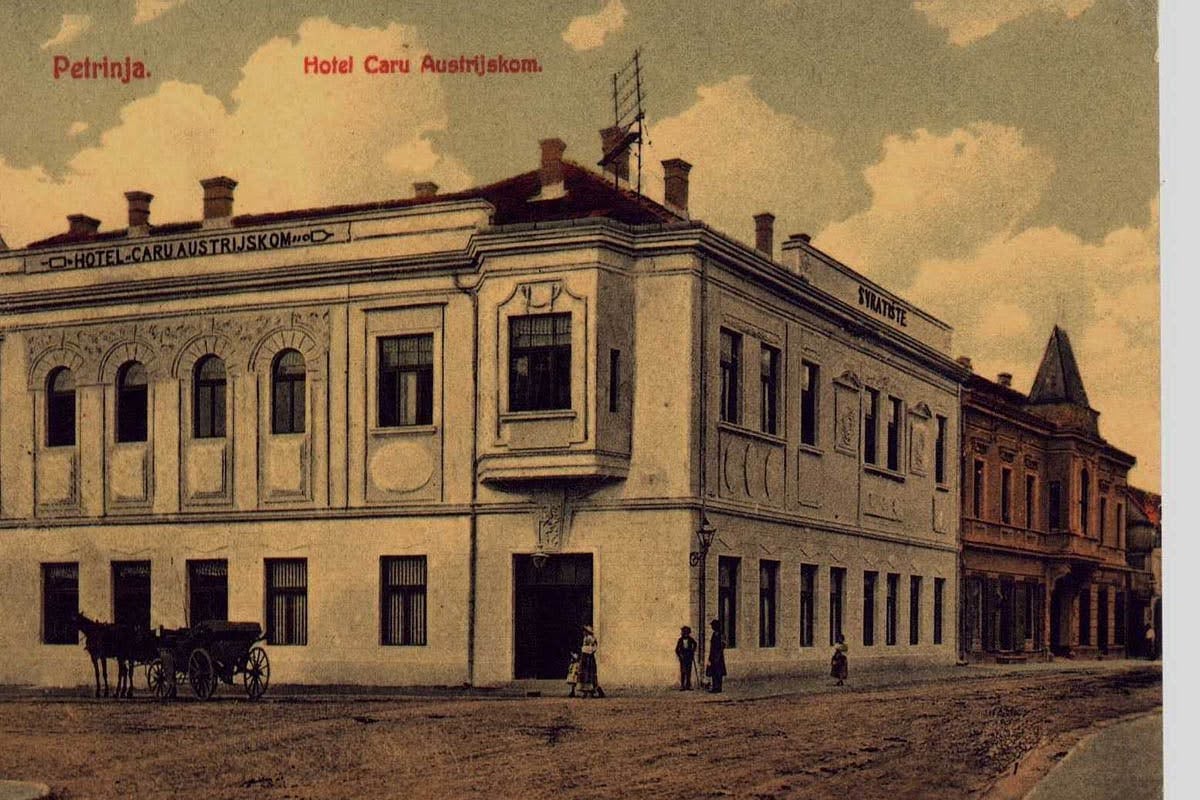 The town hotel, on Turkulinova / Nazorova street
The town hotel, on Turkulinova / Nazorova street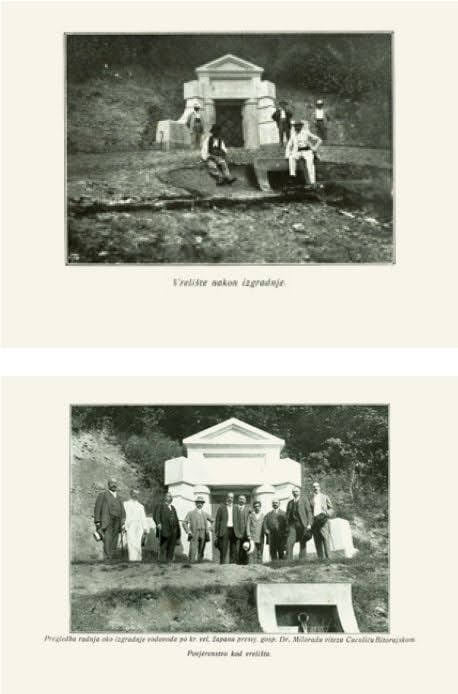
Petrinja springhead/water source on Jelen hill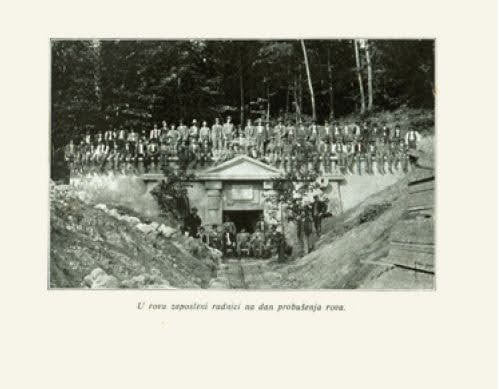
The grand opening of the city waterworks, on the hills overlooking Petrinja
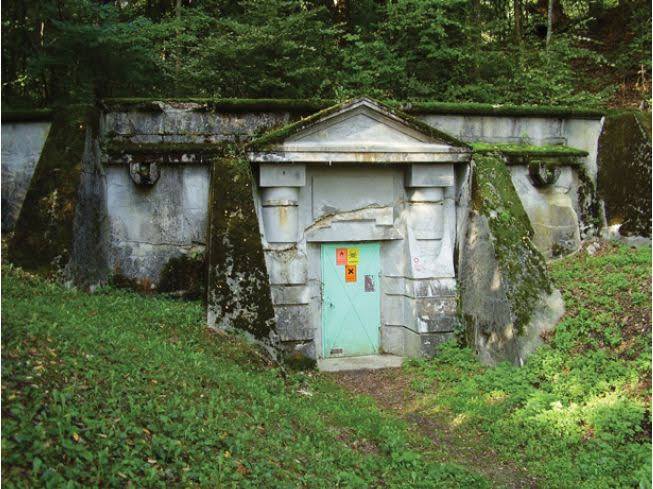 Contemporary view
Contemporary view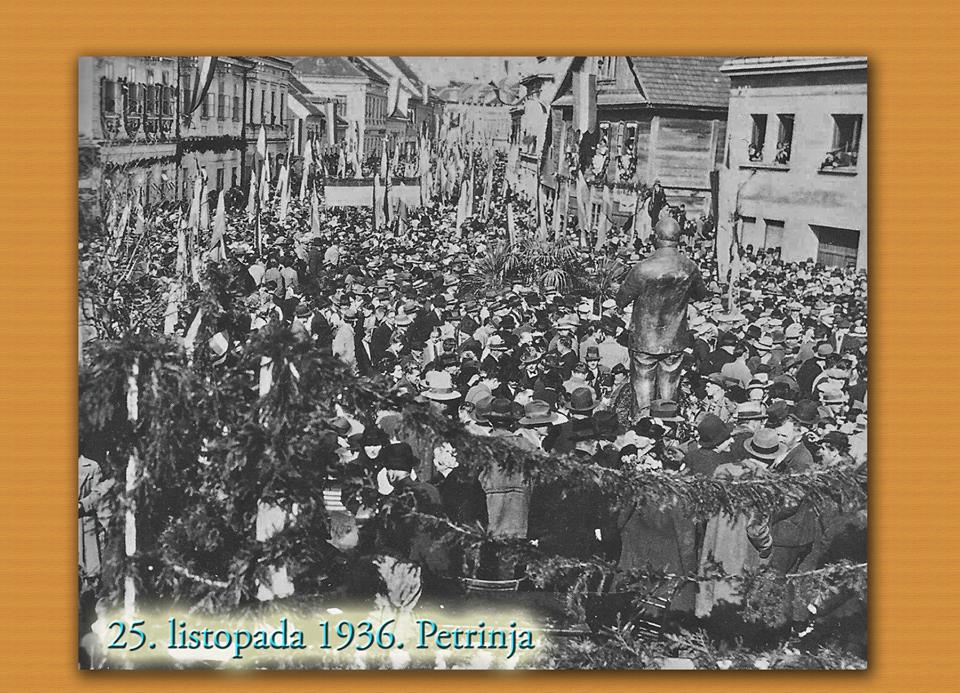
Historic Petrinja: The Yugoslav era
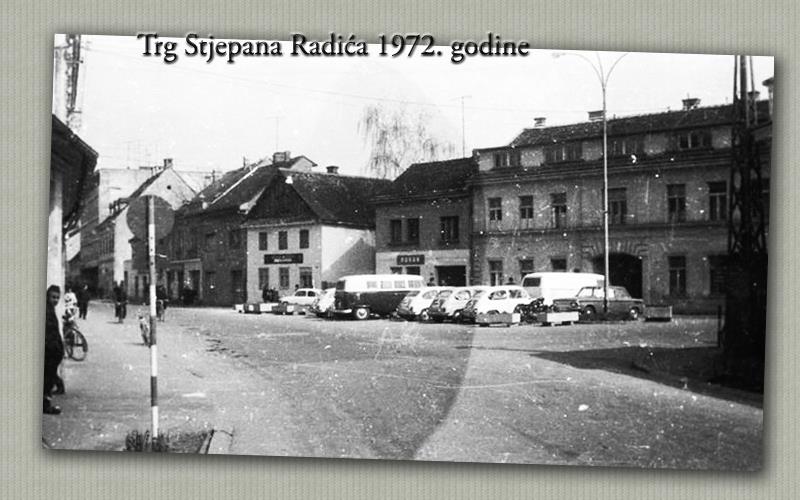
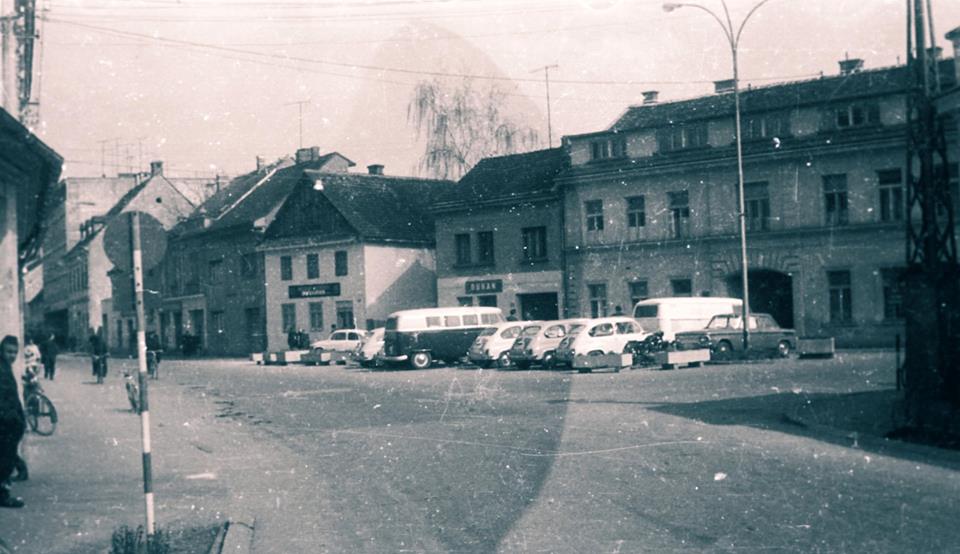
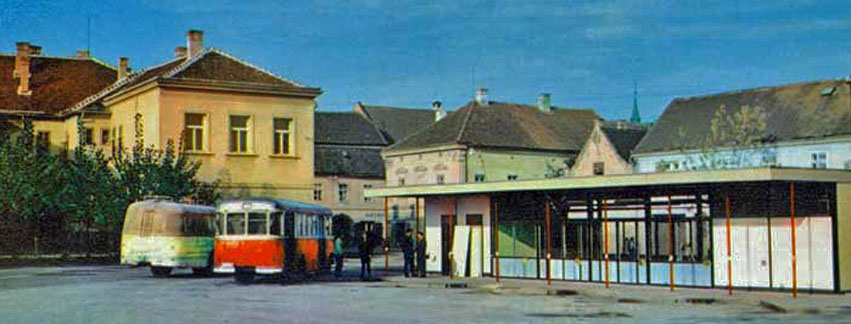
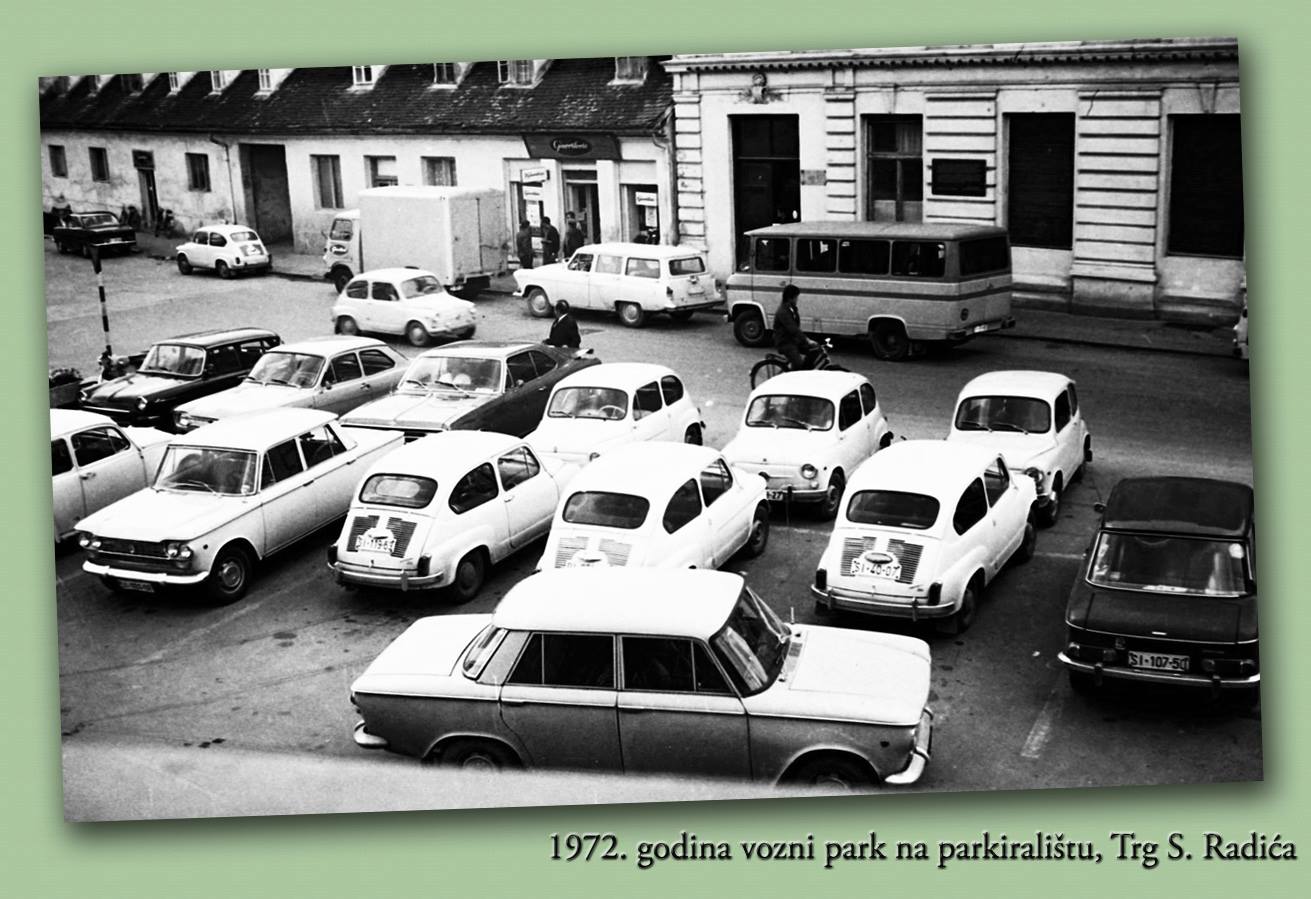
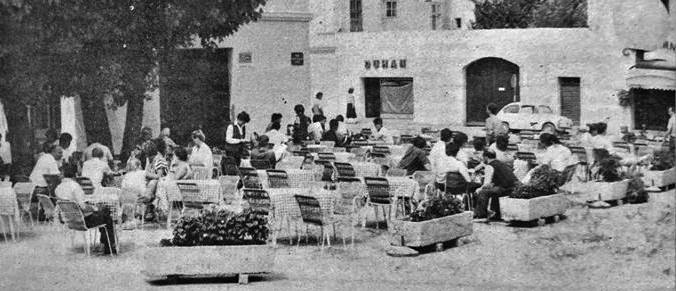
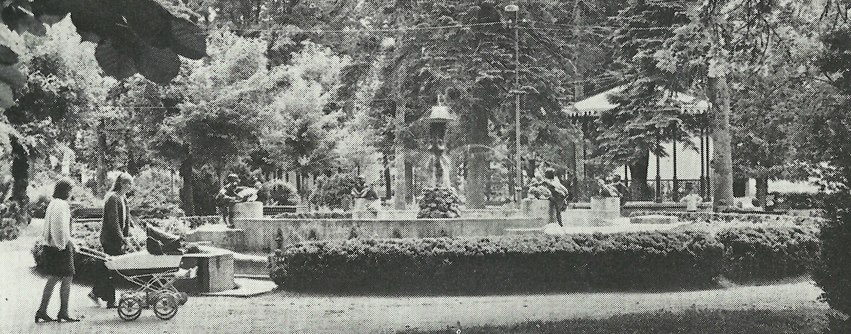

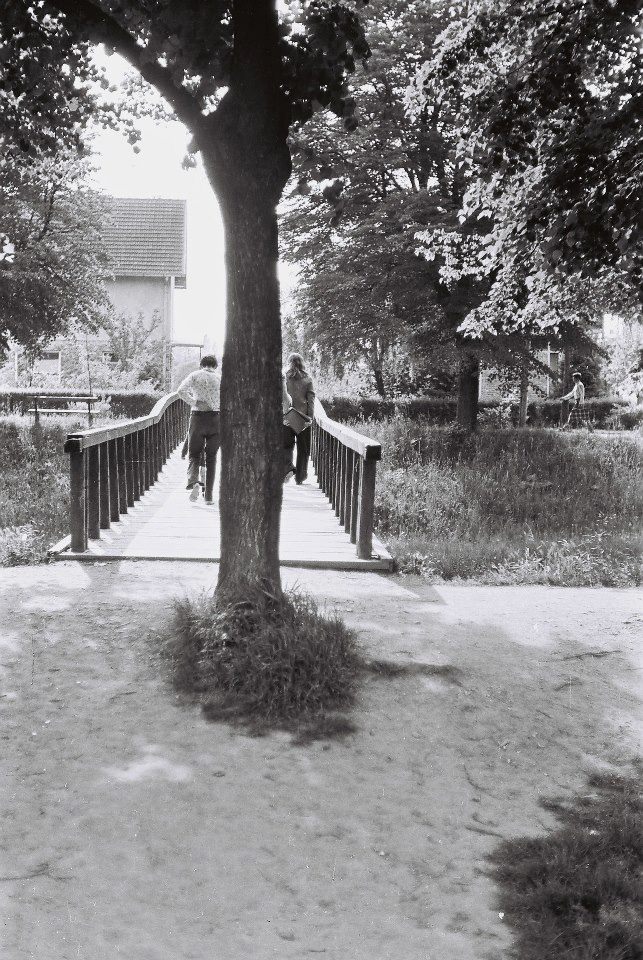
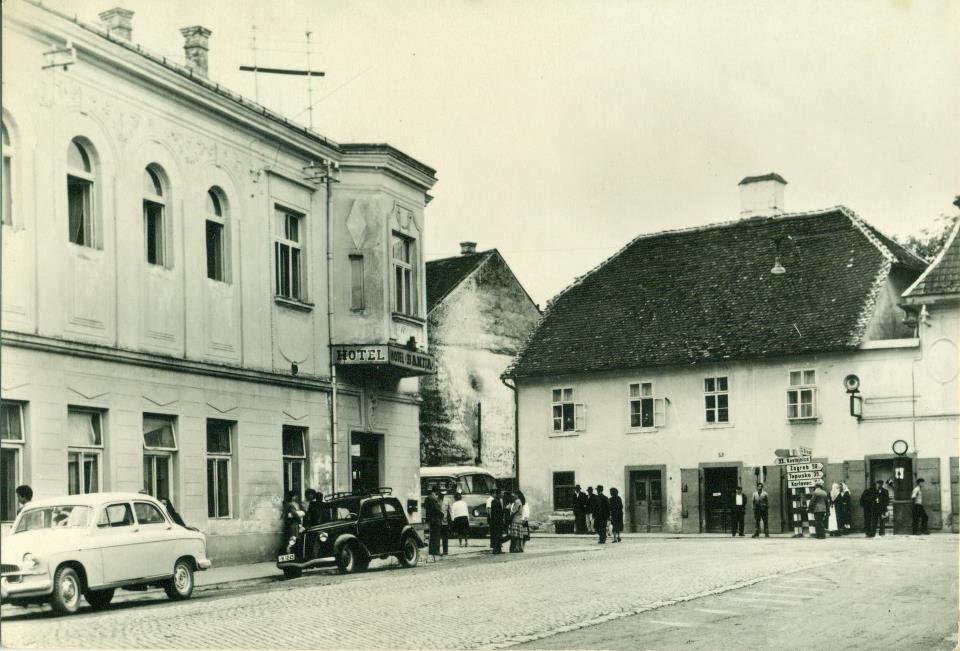

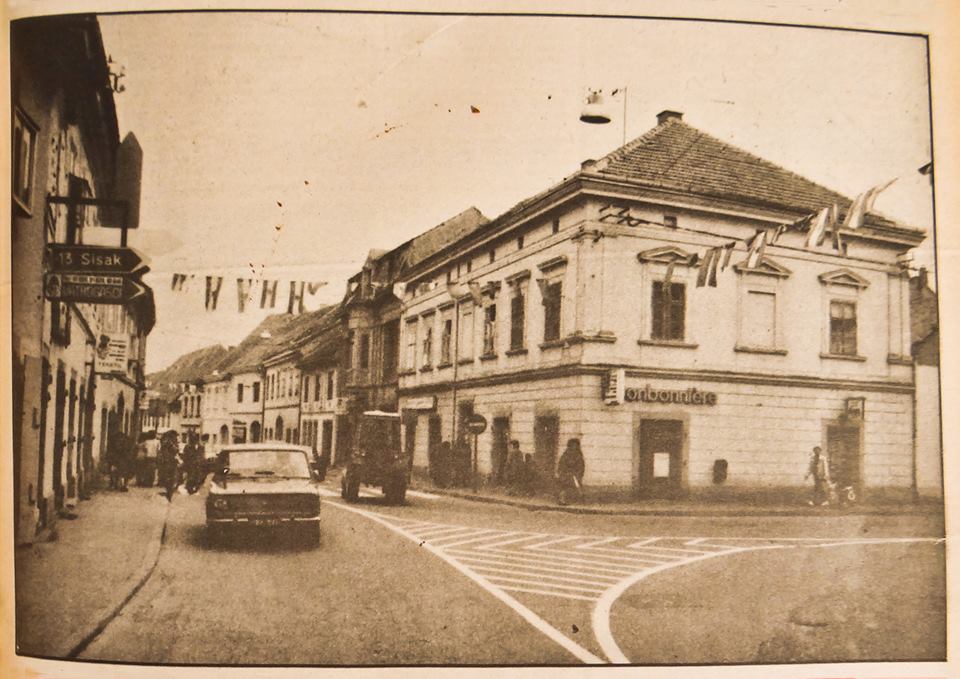
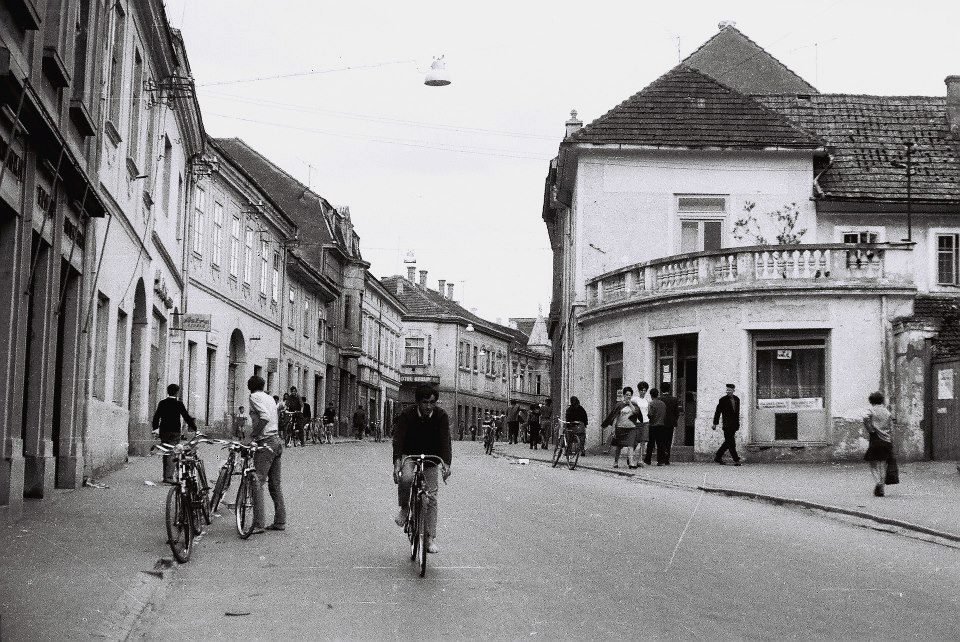
Petrinja has always been a town of the Christian religion. Many Orthodox Christians fled to the area to escape the invading Ottomans. The name of the town's most famous industrial family, Gavrilović, for instance, is more associated with Orthodox Serbia than Catholic Croatia. But, by 1948, over 82% of the town identified as Croatian. The town and surrounding areas were repopulated following the Second World War, for political and economic reasons. By 1981, 31.36% of the population of historic Petrinja and its surrounding settlements identified as Serbs, 39.31% as Croats and 24.69% as Yugoslavs. If you're not from the region, that might be difficult to get your head around.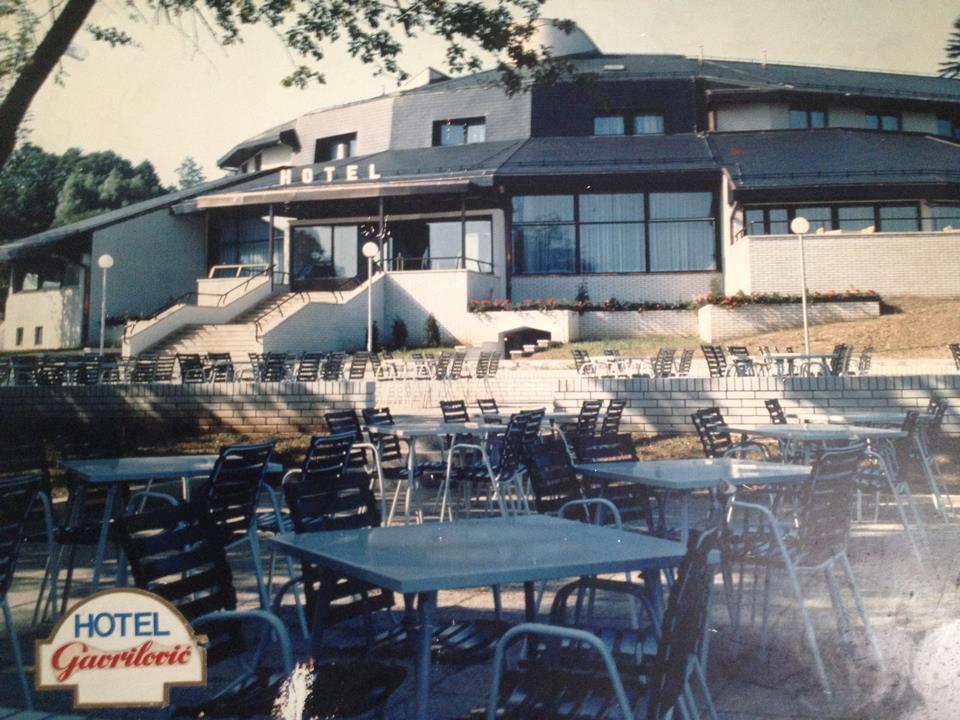
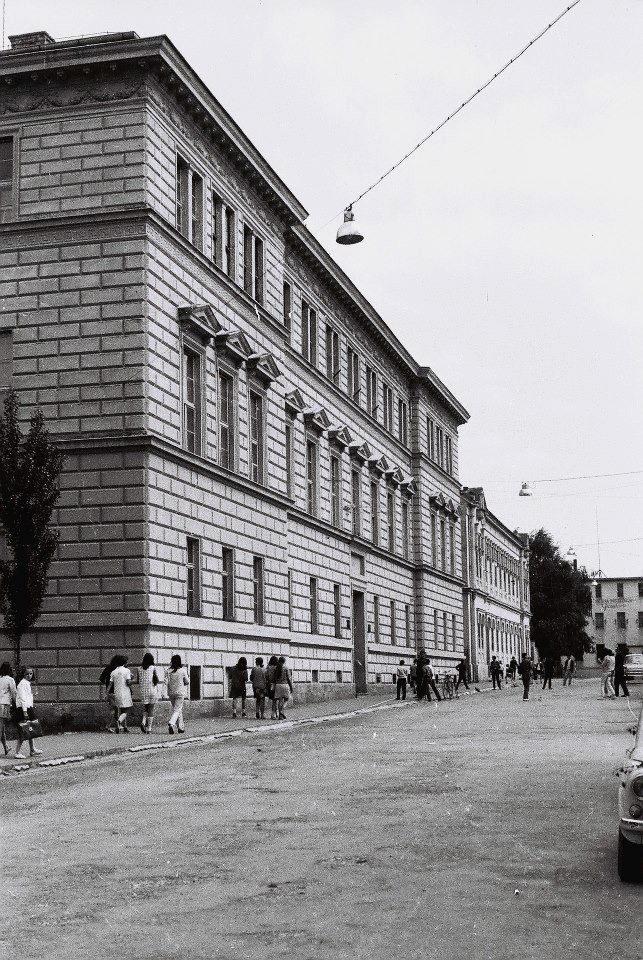
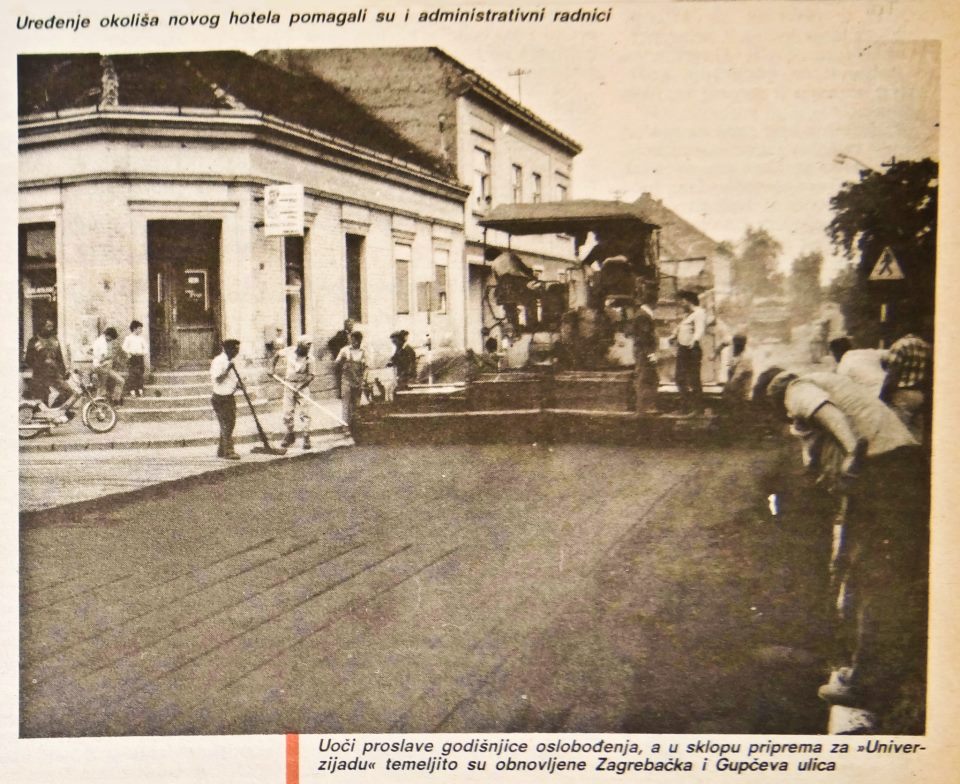

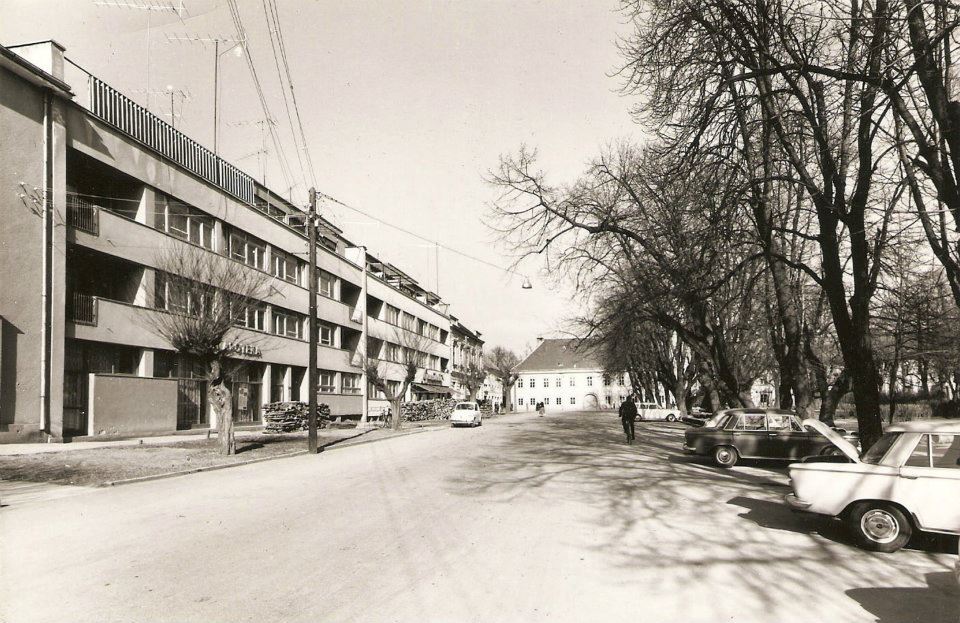

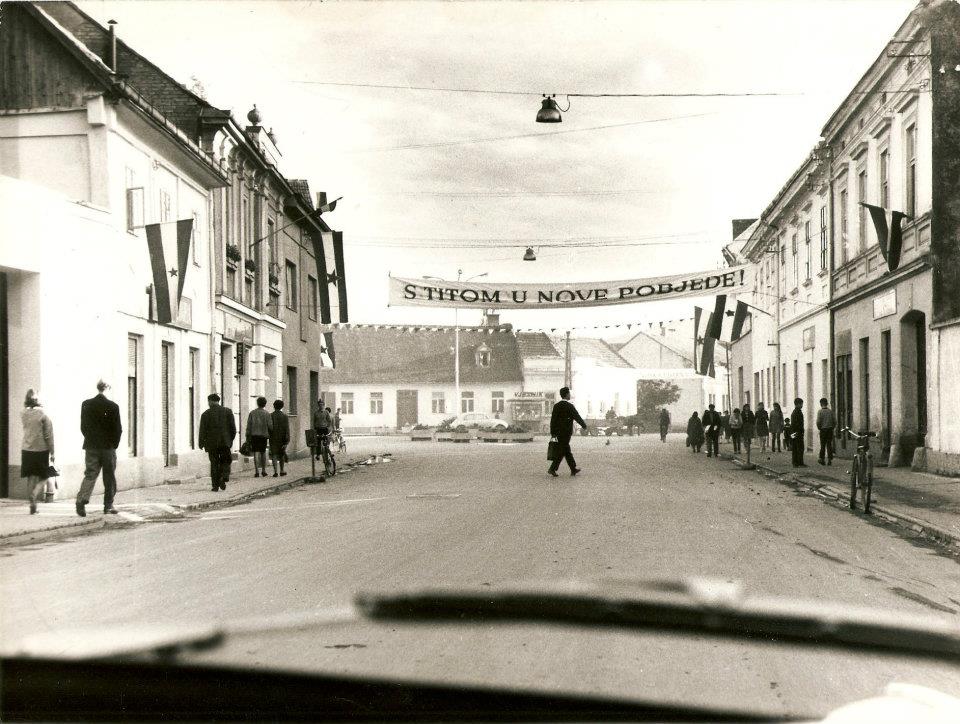
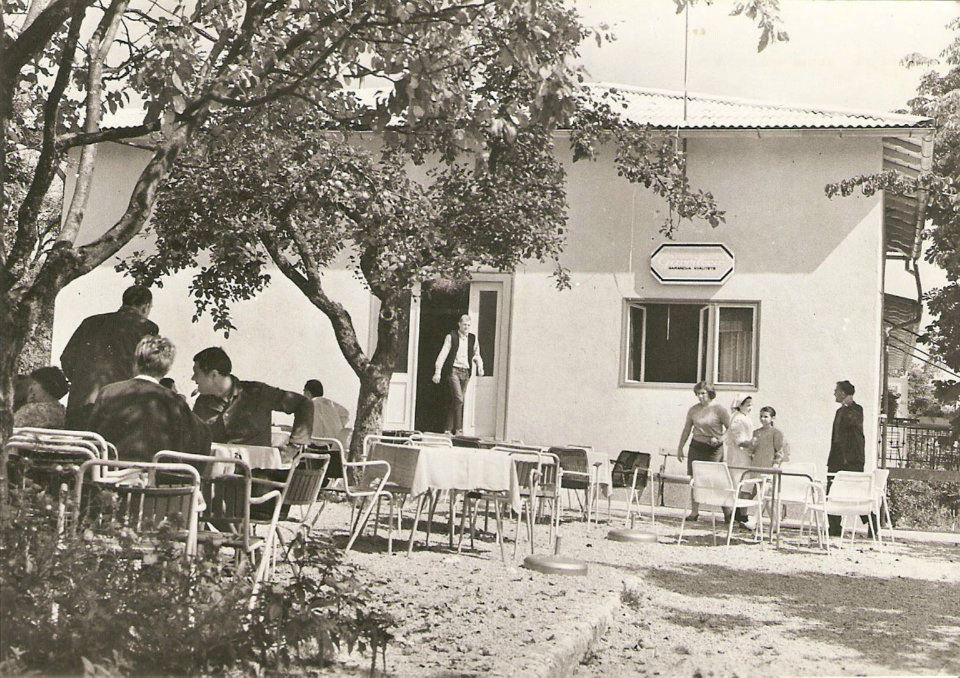

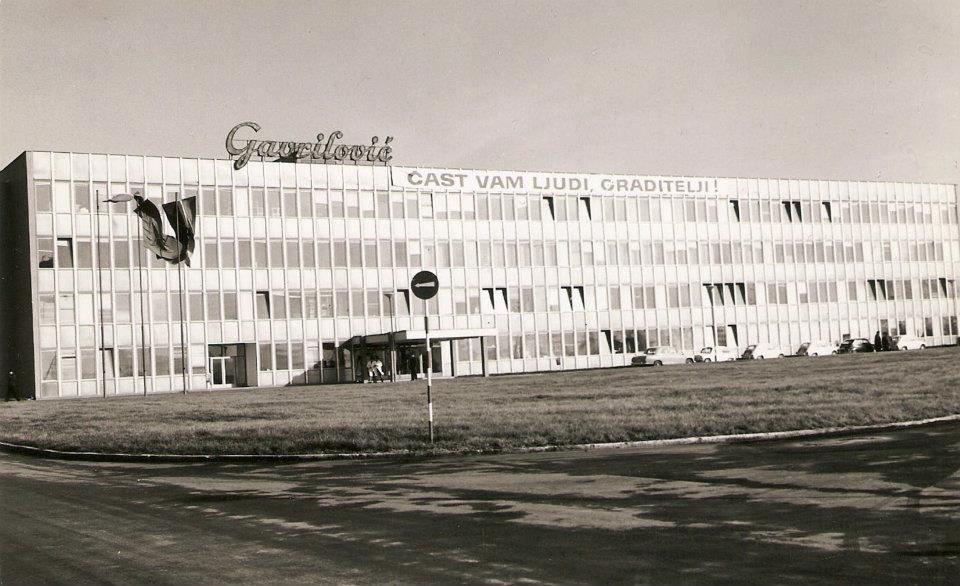
”Even in the times of the Iron Curtain, the Gavrilović company supplied meat to the American army who were stationed in some areas of southern and eastern Europe,” a resident of historic Petrinja tells TCN. “Everyone across Yugoslavia knew about this company. They had lots of great products – they still do! Many people used to work there,” Although the Gavrilović family fled the area after the Second World War, when the company was seized and nationalised by communist authorities, they came back in the 1990s to save it from bankruptcy. They returned production to the historic Petrinja area and today the company is run by the ninth generation of the Gavrilović family to be at the helm
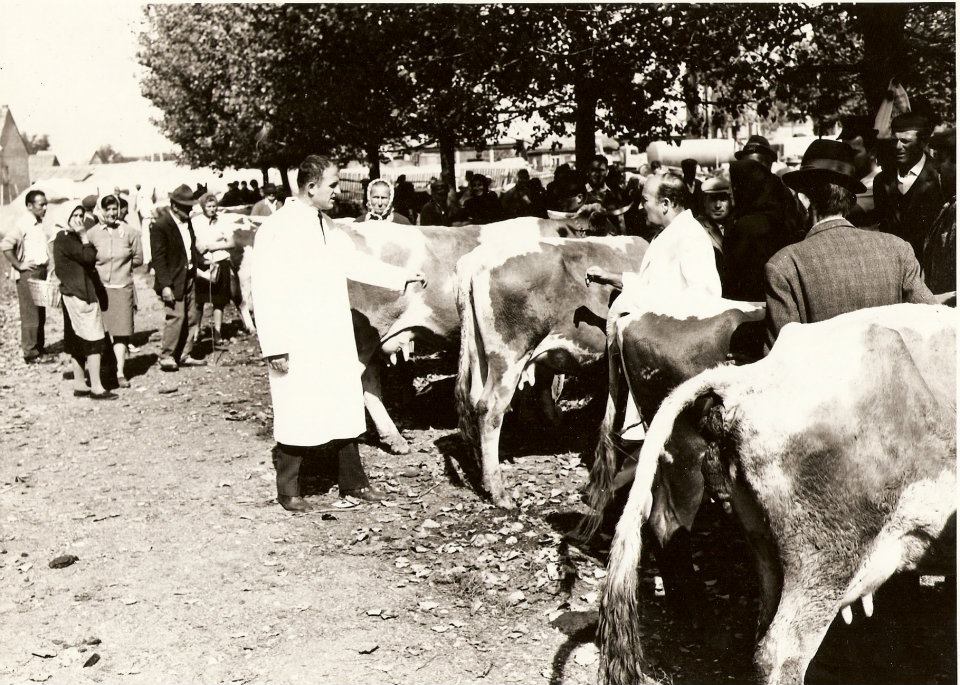
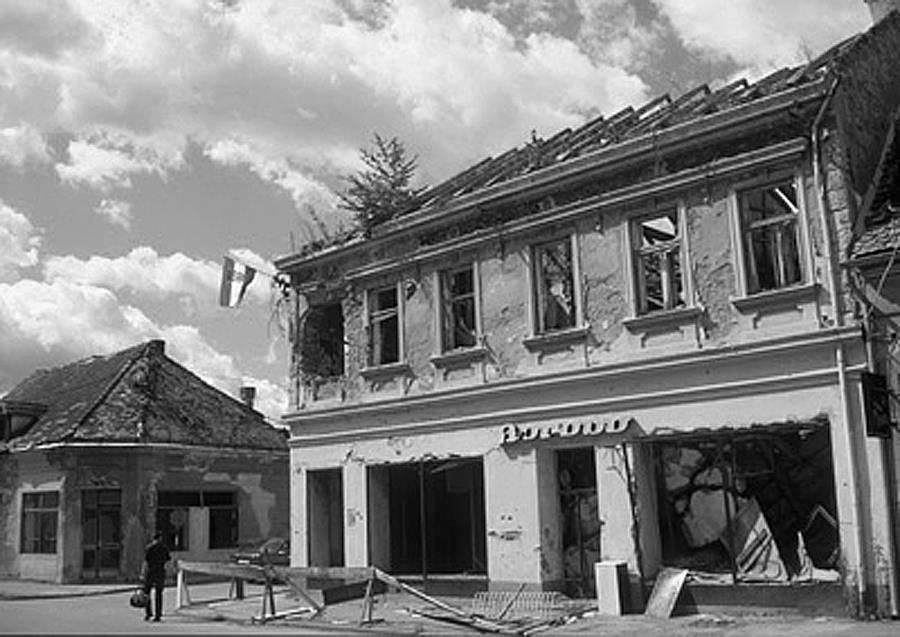

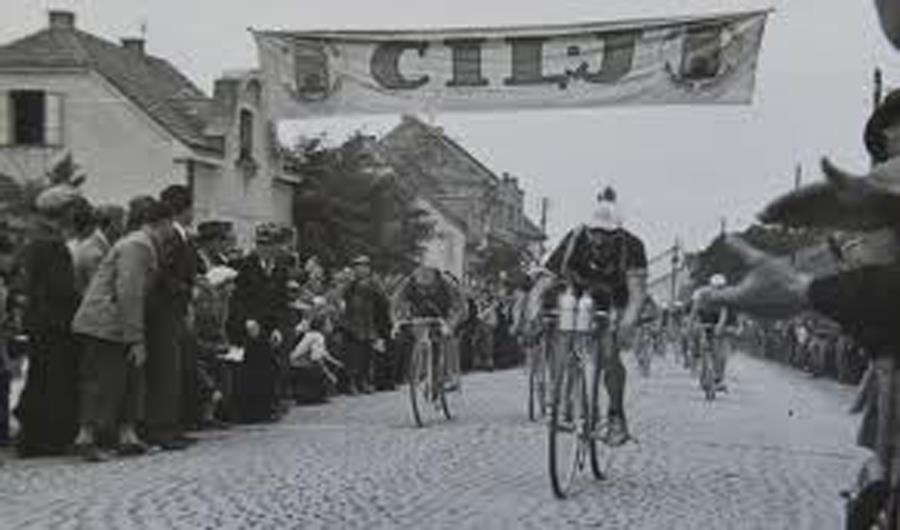
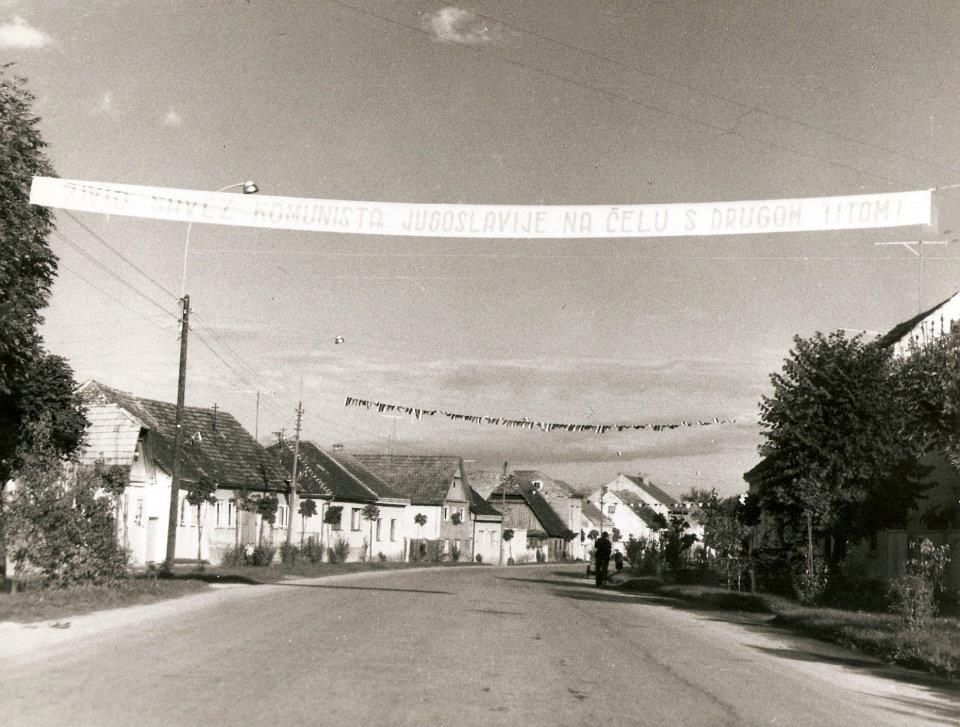


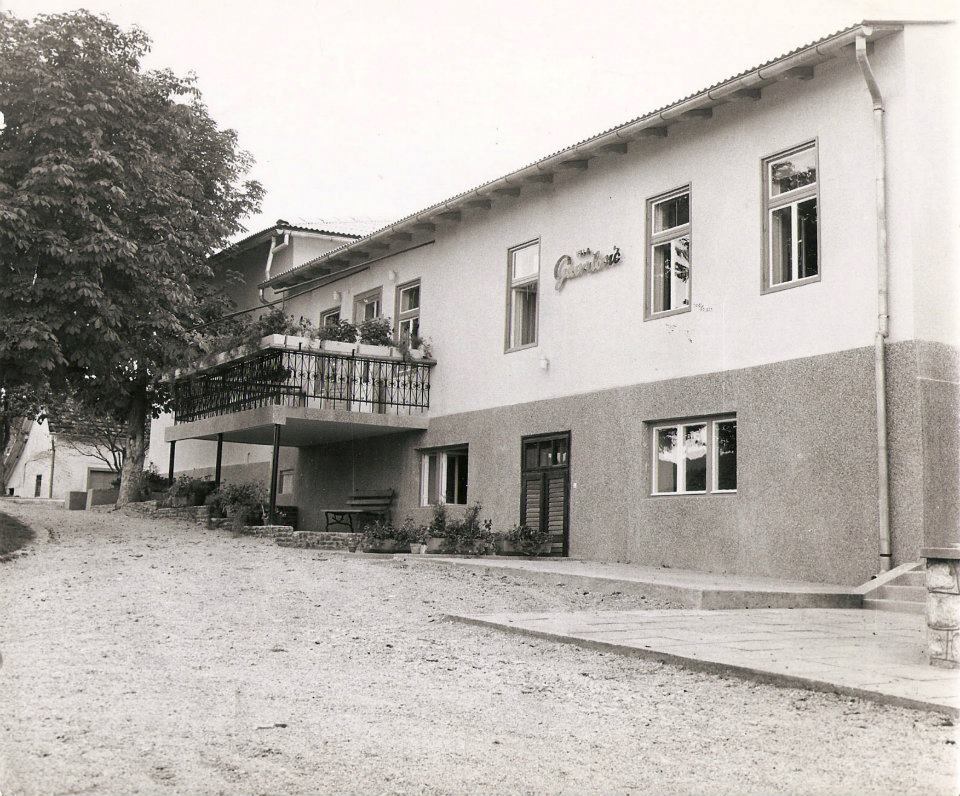
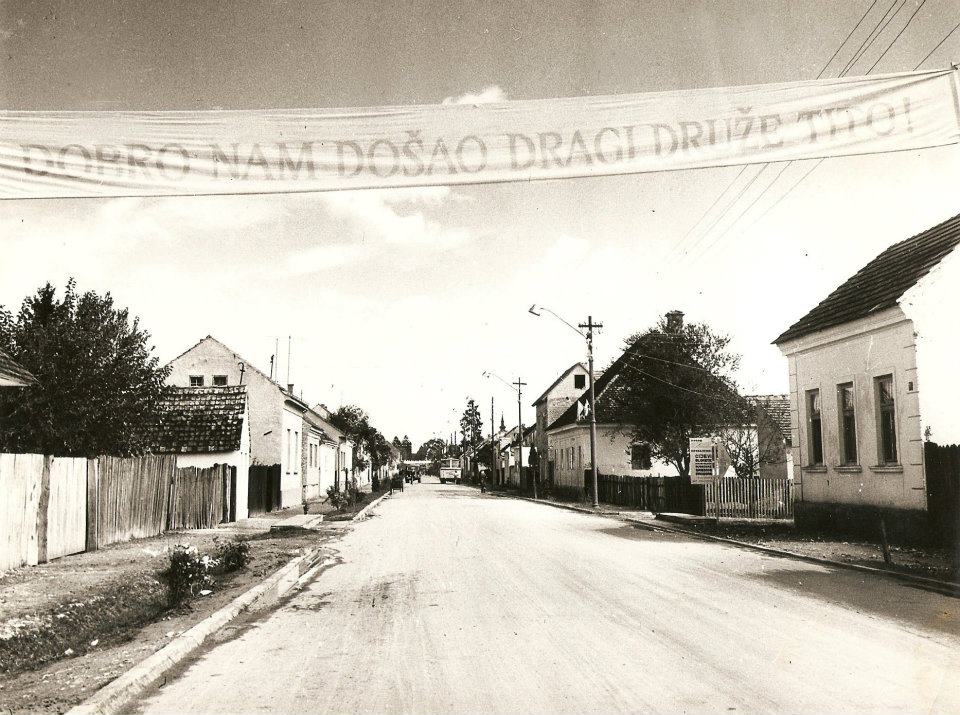
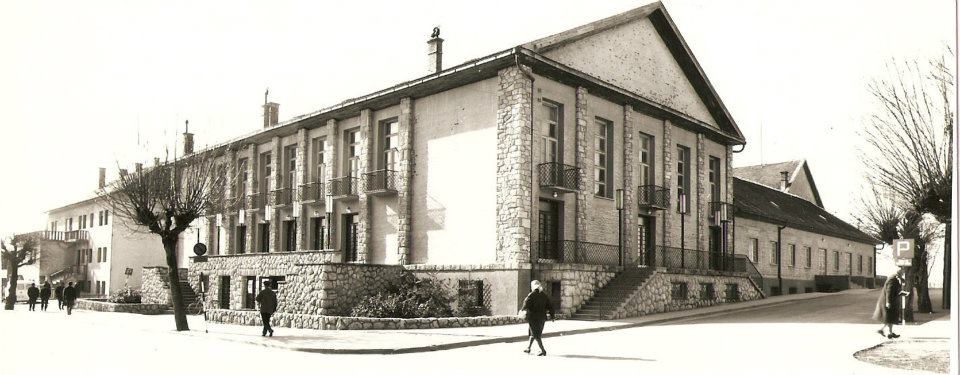

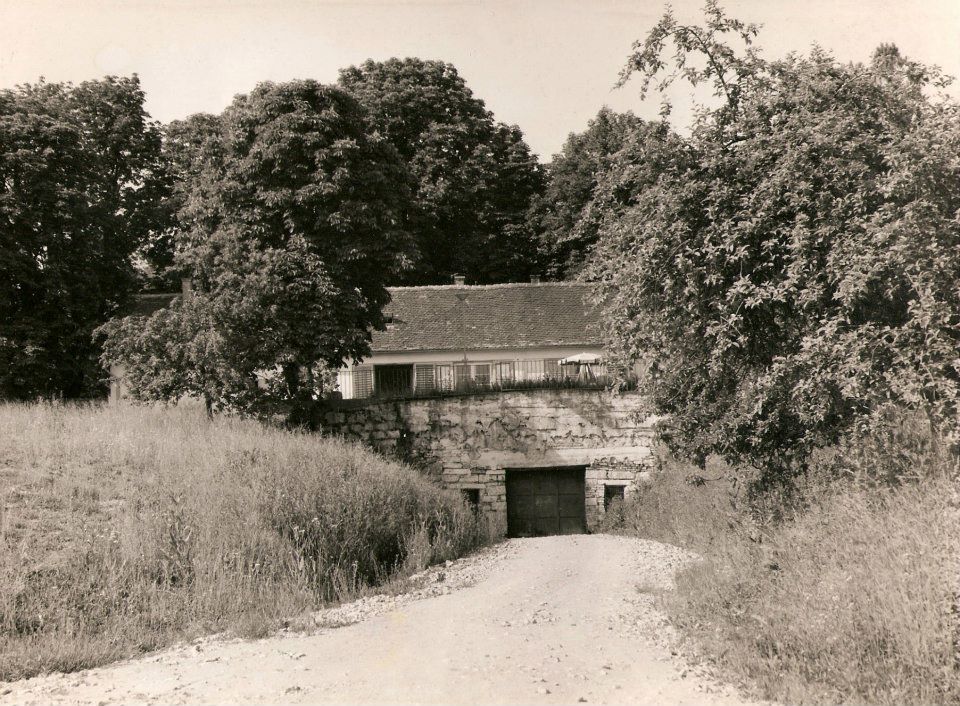
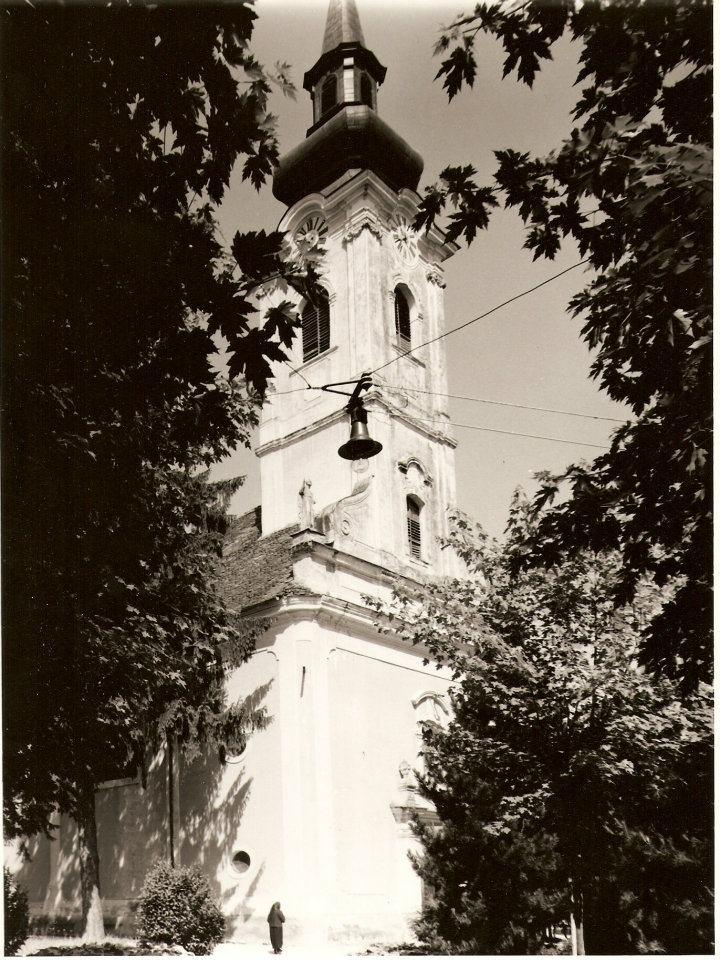


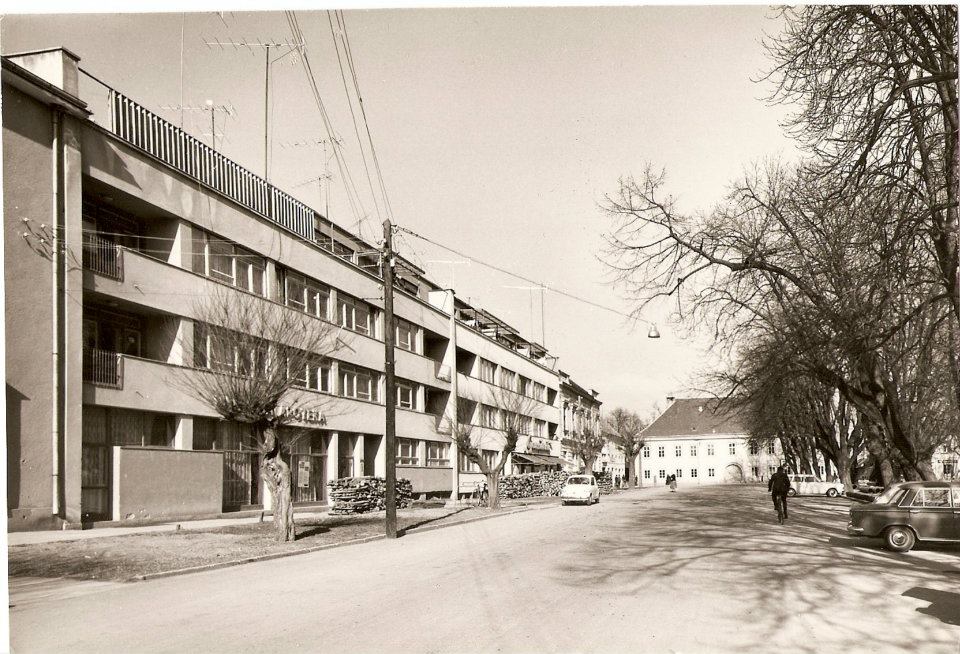
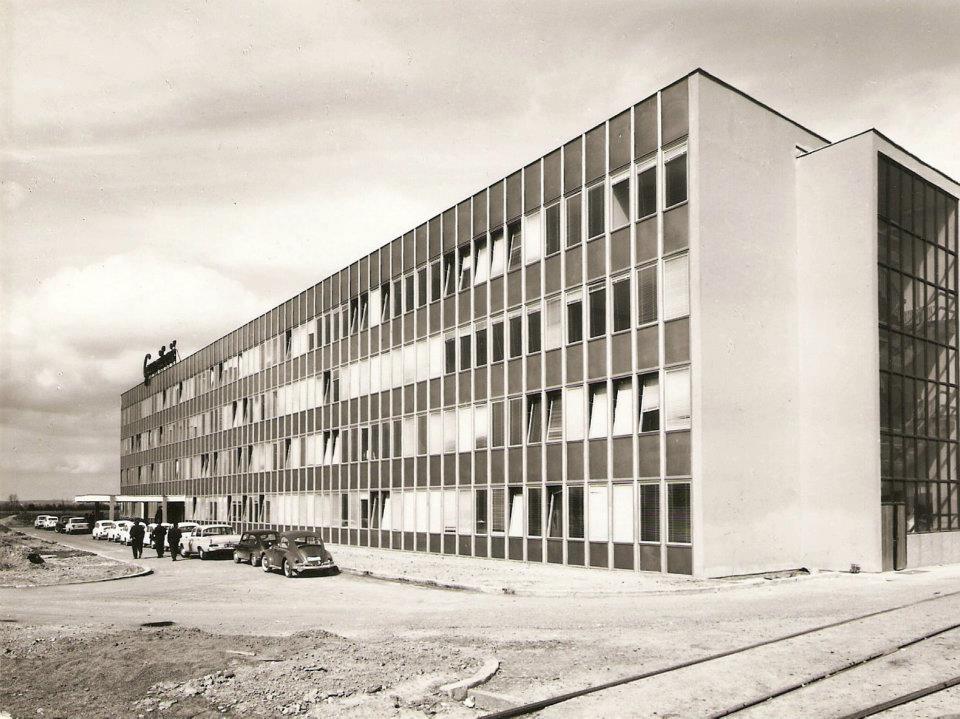


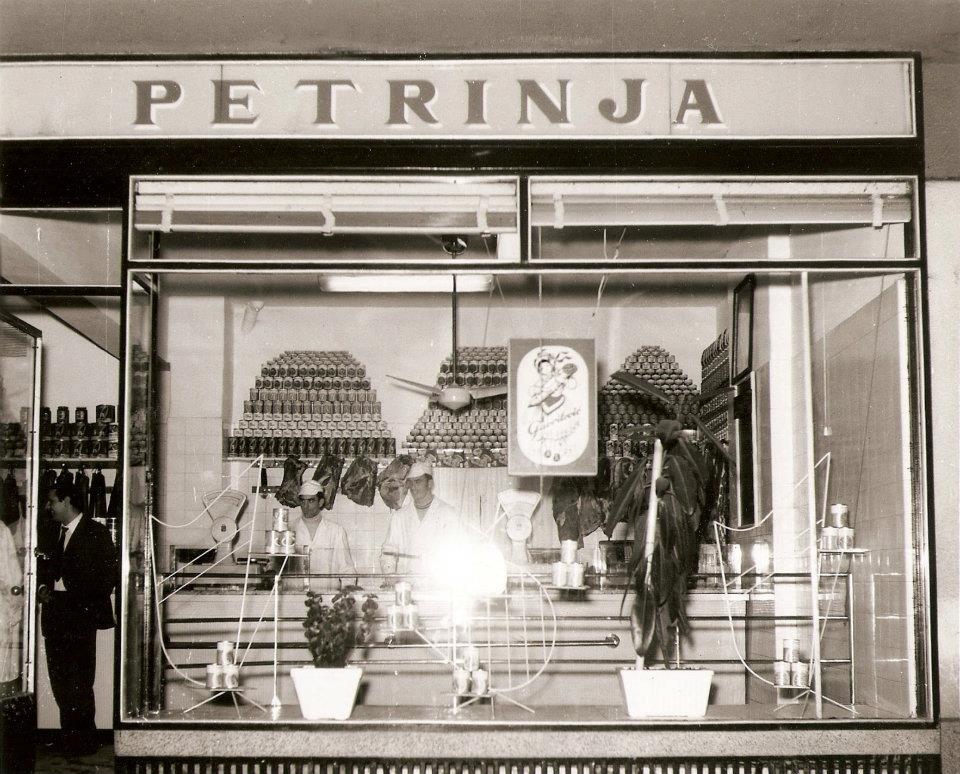
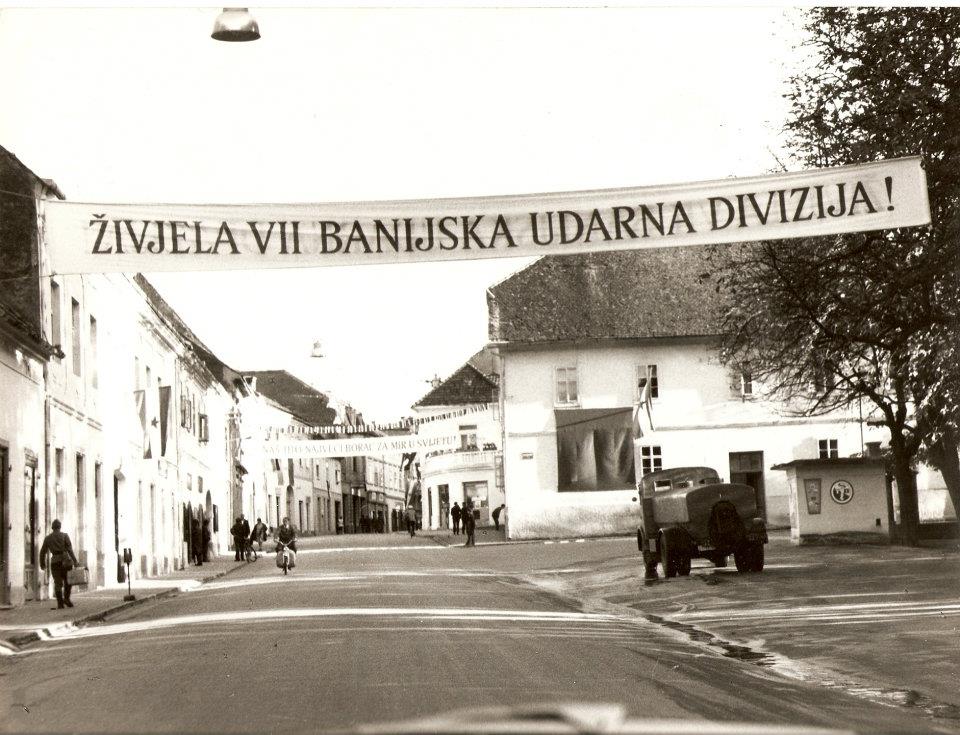
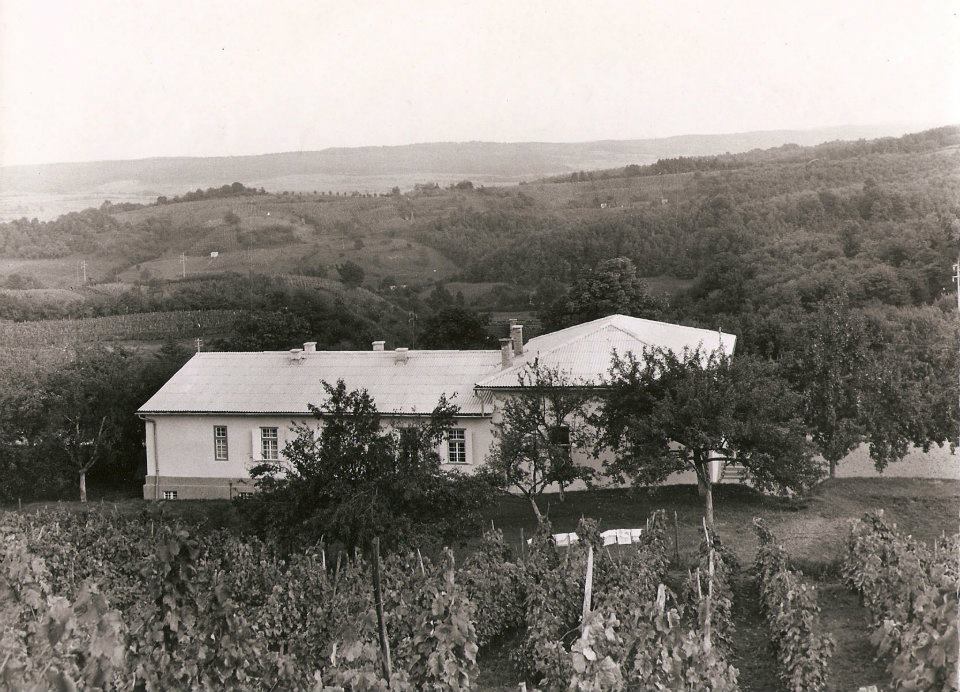
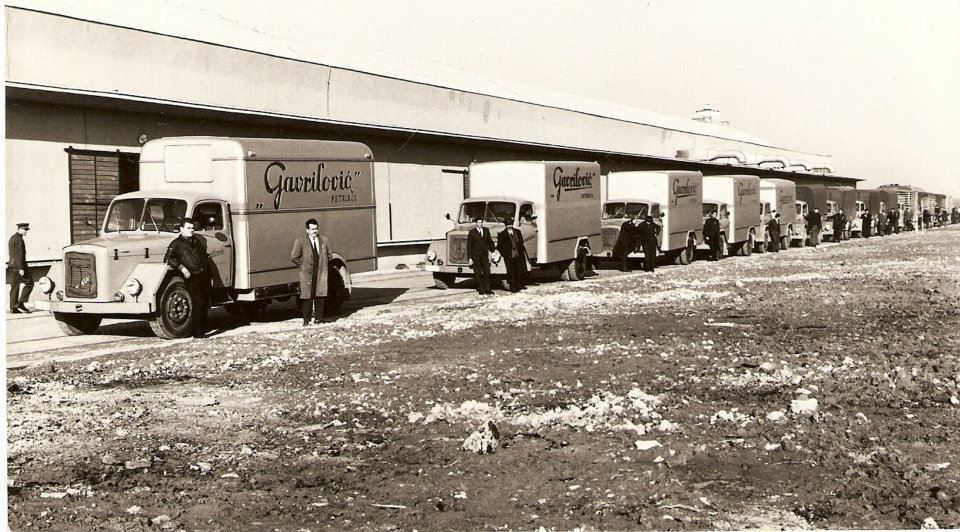
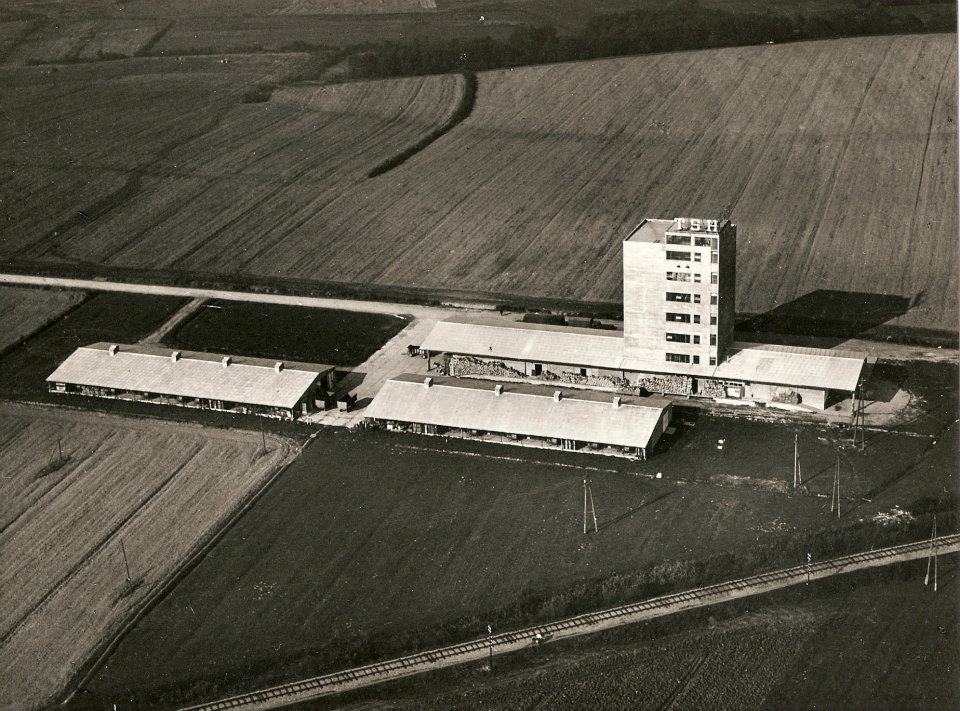
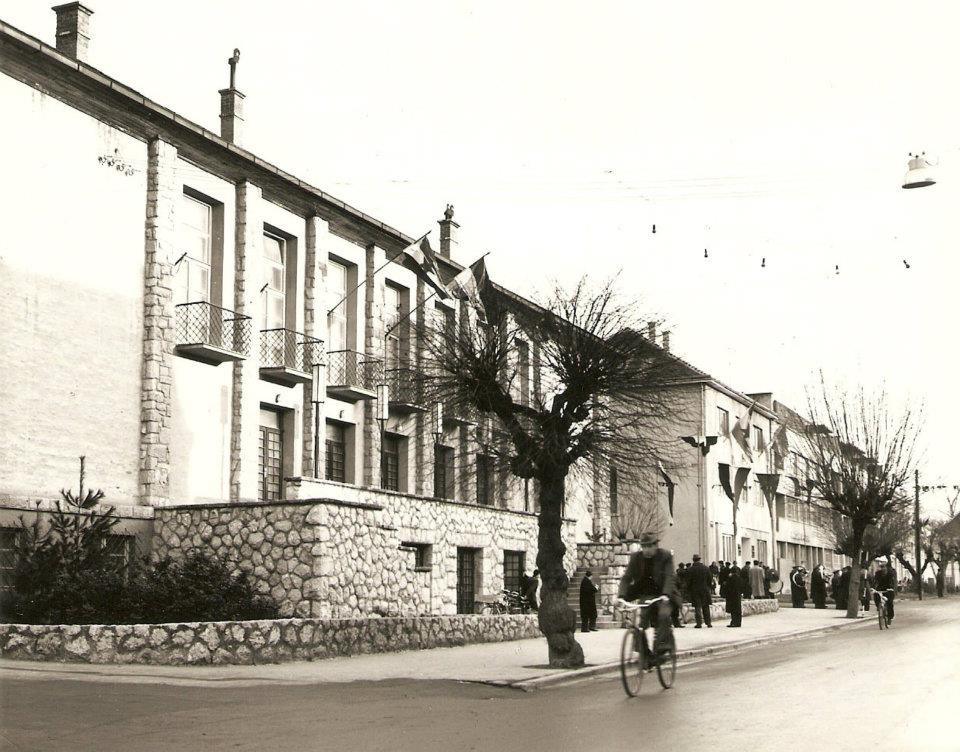
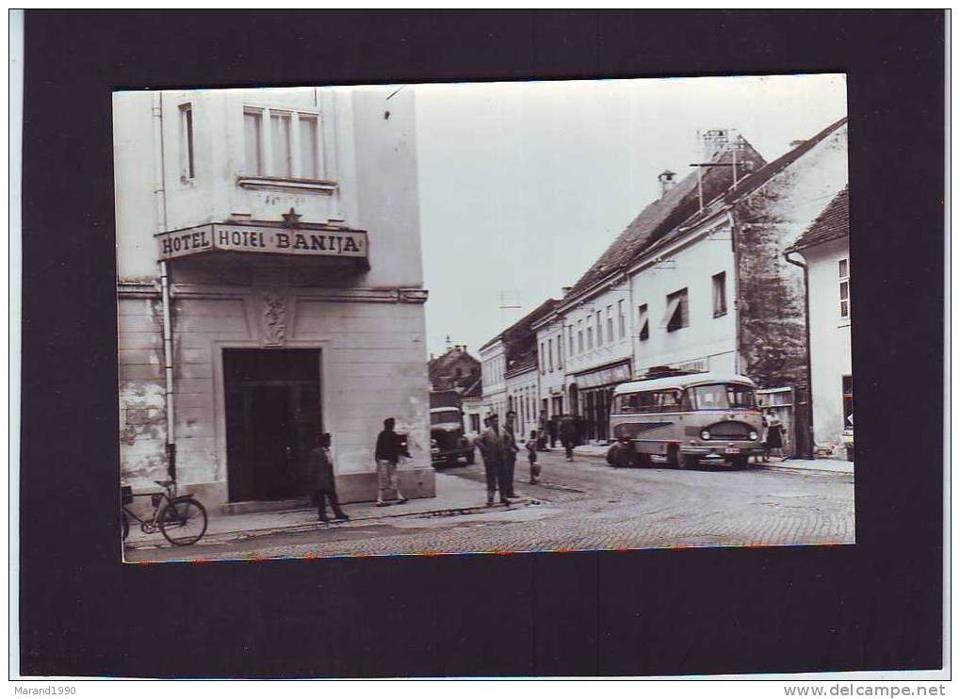
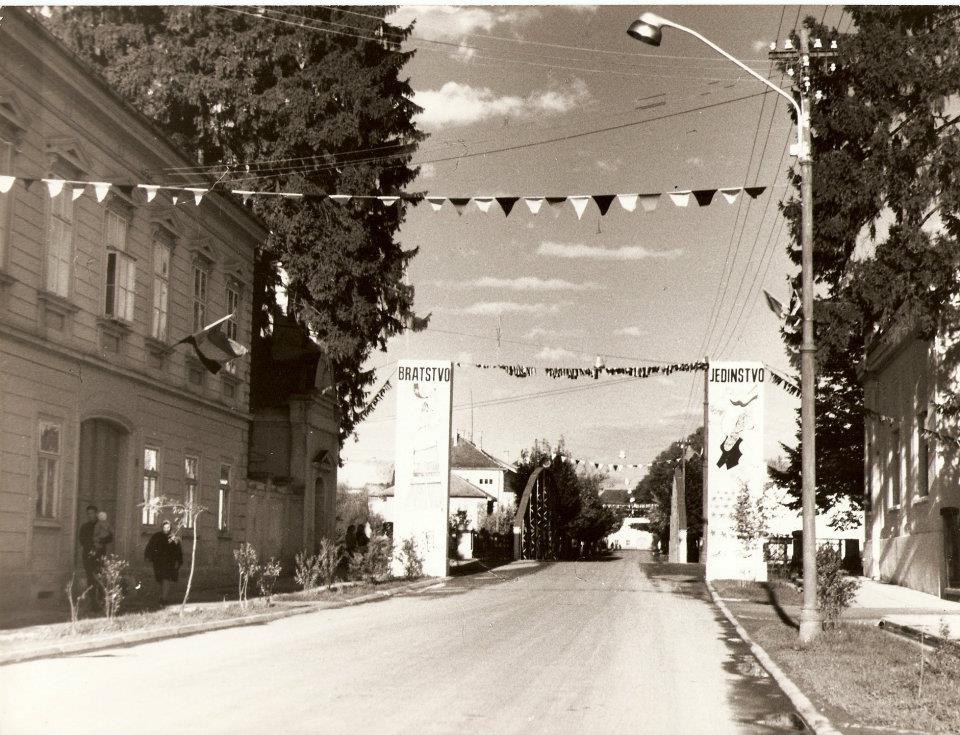
Croatia is renowned for many famous sculptors, not least Ivan Mestrovic, whose works appear all over the world. However, the first sculpture ever produced in Croatia as a public work of art was a statue of 'people's politician' Stjepan Radić, who came from nearby Desno Trebarjevo, Martinska Ves. It was made by Croatian sculptor Mila Wod (1929 in historic Petrinja). It was unveiled in Petrinja in 1936, but removed and vandalised during the 1991-1995 occupation, but found nearby, restored and returned to the centre of Petrinja in1999 in a square now named after Stjepan Radić.
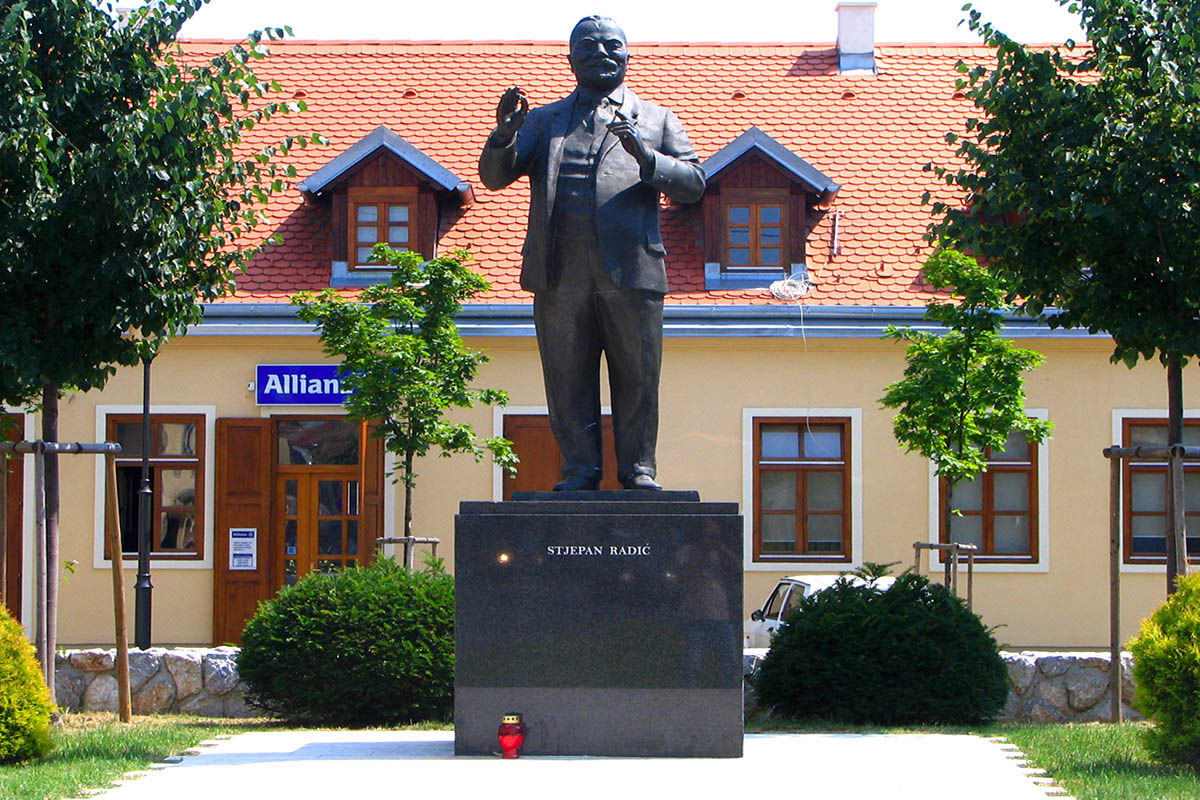 © Tourist Board of Petrinja
© Tourist Board of Petrinja
All photos © Tajanstvena Hrvatska / Public domain unless otherwise identified
Mirko Sardelic PhD: The History of Money
July 13, 2020 - We live in the times of the fastest changes ever. The financial sector, although rigid and regulated itself, is also facing different changes. With rumours of upcoming recession even before the COVID-19 crisis, and especially with the number of concerns that we are facing at the moment, it seems a good time to immerse ourselves in the pool of historical review. Hopefully, this will give us a better perspective of our current situation, and maybe we will learn something useful for the future.
Interviewer: Aco Momcilović, psychologist, EMBA, Owner of FutureHR
Interview with Mirko Sardelić, Ph.D., Research Associate at the Department of Historical Studies HAZU, Honorary Research Fellow of the ARC Centre of Excellence for the History of Emotions (Europe 1100-1800) at The University of Western Australia; formerly a visiting scholar at the universities of Cambridge, Paris (Sorbonne), Columbia, and Harvard.
How did ancient societies exchange goods and services?
I would say that you have just used the keyword: exchange. When people meet, they exchange greetings, hugs, gifts – or, if it is not so friendly an encounter, they exchange fears, stereotypes, loathing, disgust. The history of exchange is inconceivably long and diverse. But no matter how friendly or hostile relations were, humans started to exchange goods and services a long time ago.
Everything started with barter: I give you my surplus of the fish I caught in exchange for the furs of the animals you hunted. This functioned for quite some time, although it was often problematic to negotiate ‘the exchange rate’ every time one wanted to exchange their fox fur for the other person’s grain, pearls, amber, tools, or weapons. With a limited number of items exchanged, this could be arranged without major difficulty, but once the number of objects and commodities rose, some new mechanisms needed to be established. This led to the creation of first currencies.
When were the first currencies created? Who created them? What were they made of?
First, people used standardised useful objects as currency, all most likely made from metal: it could have been an axe, a knife, a cauldron, or a ring. (Ancient non-metal objects very rarely survived intact to be discovered by modern-era archaeologists anyway). When discussing objects of ancient cultures, archaeologists and anthropologists often struggle to discern or analyse their (multiple) usages. This is because the same object could have religious, financial, and ornamental use at the same time.
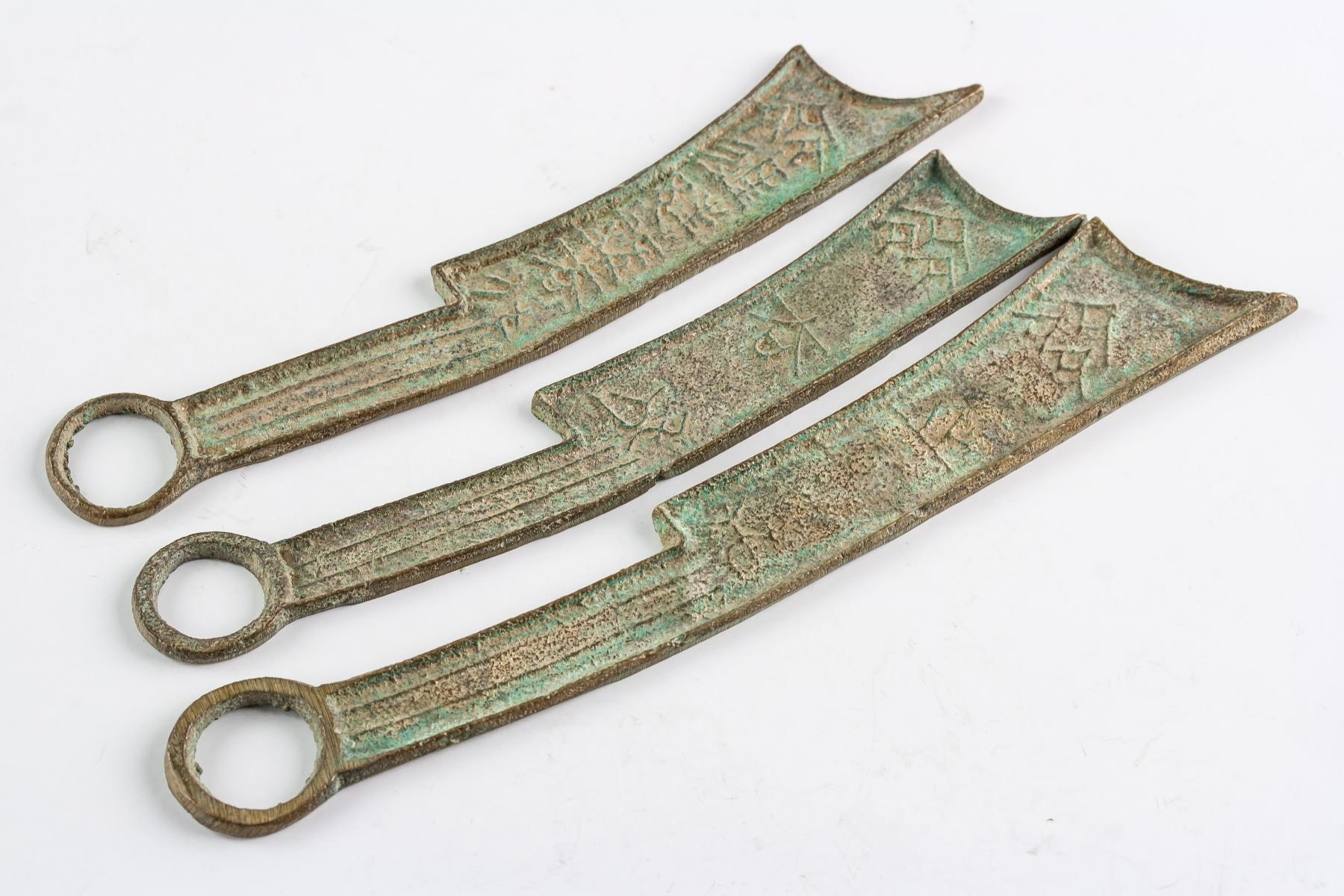
Currencies that were not metal were mostly natural. In China, Africa, and the Roman Empire, salt had, by contemporary standards, unimaginable value. Maritime states used this, but continental states also gained amazing wealth from this precious product we all need daily. Take, for example, the oldest-known salt mine in history: the Halstatt salt mine (Austria); or one of the most famous medieval mines, Wieliczka, upon which the splendid city of Krakow (Poland) built its riches.
Animal skins were used widely: beaver or squirrel pelts, marten, bear, or buck. The names of some of these animals can still refer to money in some languages: in English people still use the term ‘bucks’, while Croatian currency is still kuna (marten). Aztec and Mayan cultures used cocoa beans for currency. They kept them in bags containing 8,000 or 24,000 beans. One bean could be exchanged for an avocado, while 100 beans could be exchanged for a turkey, or a slave, depending on the time period and the particular area of Central/South America.

In Babylonia, metals (such as silver and copper), and barley grains were both used as currency. The value of one shekel was 180 barley grains. Hammurabi’s Code, more than 4000 years old and one of the most fascinating legal codes in the history of humankind, regulated the payment of field workers in grain, while surgeons, brick-makers, and artisans were paid in silver currency. Seeds of carob (Greek keratos, or Italian carato) were used to relate to the fineness of gold – even today we use the same word, carats (as in 24-carat gold) for the same purpose. Amber, ivory, jade, rice, eggs, sheep, goats, camels, seashells, coconuts, and many other natural products were used as currencies.
How was the exchange between different currencies undertaken? What were the first exchanges?
Throughout history, humans often set, in customary law or in legal documents, items that could be exchanged for something else and in what circumstances. Many societies even had a fixed price for human life: if a person killed someone, they could (or were obliged to) pay the sum to make up for this offence. In early Germanic societies, it was called weregild: blood money. It was prescribed how much human life was worth, depending on the deceased person’s social status. There was even an amount for killing the king, which suggests that it had happened. Even the root of the word ‘pay’ comes from Latin pacare – to pacify or make peace with the creditor or the one you offended by killing their kin.
As we can see, Western civilisation owes so much, in terms of etymologies and financial traditions, to the Greco-Roman world, as well as to late-medieval Italian merchant states. Words such as ‘money’, ‘mint’, and ‘monetary’ have the same root. They all come from ‘Moneta’, the nickname for the Roman goddess Juno. Traditional etymology tracked its root from the verb monere – ‘to warn’. It is likely that the etymology of the word ‘cash’ is again Latin (from capsa – ‘(money) box’; Italian cassa), although some derive it from Tamil word casu – ‘copper coin’, via Portuguese caixa. Salary comes from Latin word salarium, which was a Roman soldier’s allowance to buy salt (sal in Latin).
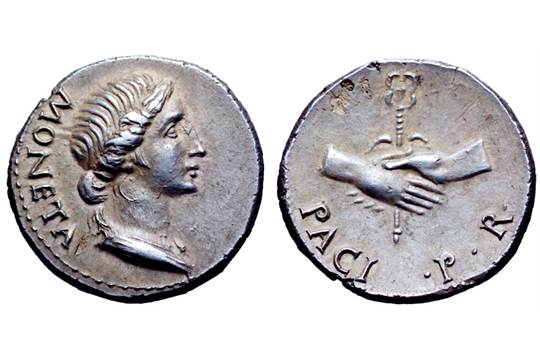
Italian city-states, such as Venice, Genoa, and Florence, had trade networks and outposts throughout the Mediterranean world and the Near East and developed quite sophisticated financial tools and means of exchange. The same can be said of Arab merchants of the period. When studying monetary history, one should also look into the financial traditions of China, where first paper money was put into circulation, more than a thousand years ago. Among these nations, a lot could be learned about the exchange between currencies. However, the first exchange offices as we know them in the Western world today were probably established by the Dutch and the British, who became global (financial) powers in the 17th and 18th centuries.
FIAT money is an invention of the late 20th century? What was the monetary base in the past?
Not everyone will know what ‘fiat money’ is. This is money not linked to physical reserves (of precious metal, for example), but its value is arbitrarily defined by governments or rulers. In short: gold coins can be worth exactly their weight, while a full bag of paper notes is worth as much as the authority that has issued the currency agrees on its value. The other type of money is the mentioned ‘commodity money’, whose value is intrinsic, i.e., its value comes from the value of the commodity from which it is made, such as silver or gold. The last type is ‘representative money’, which is usually a piece of paper representing the worth of the sum, or the intent to pay.
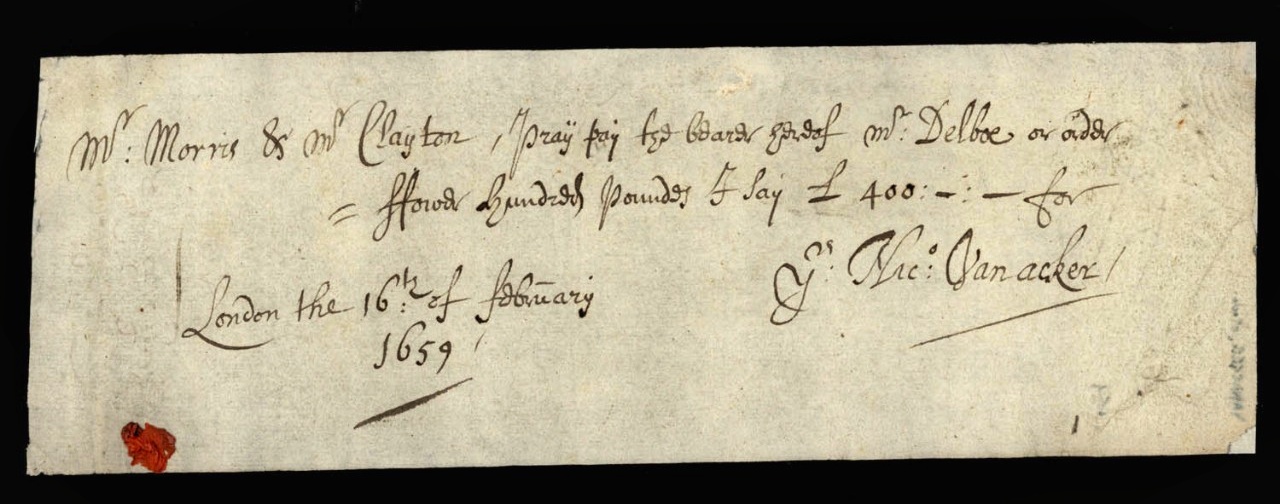
For three thousand years, the monetary base has consisted of reserves in (precious) metals: in ancient China the standard was copper; in Assyria lead; while in later centuries the standard has become silver and eventually gold. Gold could never have been a sole monetary reserve, as there would never be enough of it. It is a fabulous metal that is literally out of this world. It cannot be produced on Earth, although alchemists put so much effort into attempting its production during the Middle Ages and the early modern period. All gold deposits on Earth that have been blended into our planet’s core and crust were created by explosions of distant stars. One should bear in mind how rare and heavy gold is. The total amount of gold that has ever been mined or discovered on Earth throughout history is estimated to be between 200 and 400 thousand tons, which equates to the volume of four to eight Olympic swimming pools. This is because the specific mass of gold is 18.6 kg/litre. Just for comparison, a regular airline cabin bag (standardised at 50x40x25 cm) has a volume of 50 litres. If you packed it perfectly with gold bars, you would end up ‘carrying’ a staggering amount of 930 kg of gold!
Today, we have a new revolution with cryptocurrencies. How did money revolutionise societies before?
Money cannot buy everything, but it certainly provides the owner with a high dose of security and freedom. The most important characteristics of modern money are its durability, portability, divisibility, uniformity, limited supply, and acceptability. Metal coins, especially the ones issued by strong and rich monarchs, had all of these. They first appeared some 2,600 years ago.
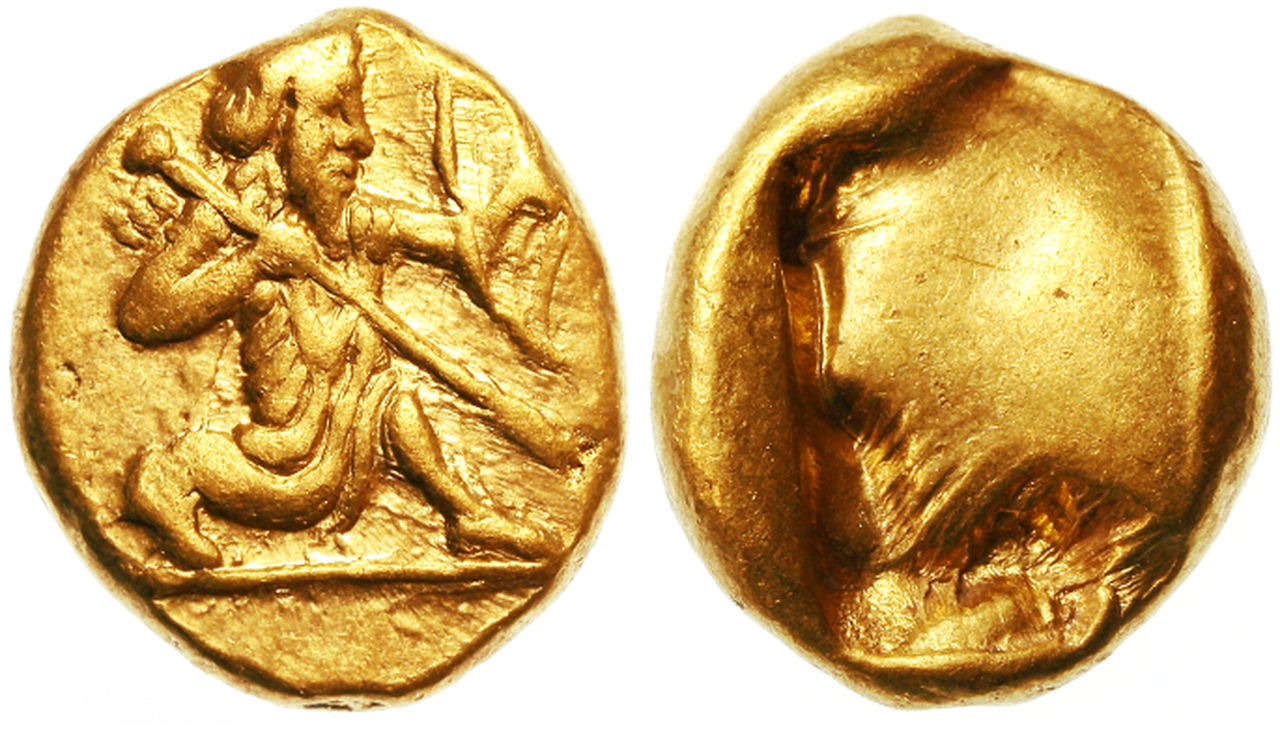
The introduction of cheques was quite an interesting and useful change in the money market. In the Western world, the history of cheques can be traced to the very successful Republic of Venice, ruled by a merchant capitalist elite. In the 13th century, the Republic issued cheques that were used in international trade – replacing huge amounts of silver – which was much more practical, not to mention safe, to transport by ship. Nonetheless, this was not an entirely new invention. Some forms of cheques were used in Mesopotamia, only to be improved upon by Muslim merchants in the Middle Ages. Merchants could exchange silver coins for a piece of paper in Baghdad, one of the most prosperous cities in the world (before it was conquered by the Mongols in 1259), and cash that piece of paper (cheque) in Cordoba (Spain), more than 5,000 km away.
The ‘step zero’ of globalisation is also related to financial issues. What we mean by globalisation today is that I can prepare myself a delicious breakfast from Australian avocadoes, Colombian bananas, Spanish lemons, Irish butter, and Italian prosciutto – but access to such a wide range of products in our households has been mostly a 20th-century standard. What I mean by ‘step zero’ is the moment when the world became connected for the first time. (Of course, in history, one always needs to be careful with ‘first times’, but I use it here just for the sake of journalism, as there is no place to elaborate contested theories). In the 15th and 16th centuries China had paper money and experienced a monetary crisis mostly due to a shortage of silver. Japan was the biggest exporter of silver before Spain took control of huge silver deposits in the Americas. China needed silver and Spain was a major provider, across the Atlantic. However, in 1571 Manila was founded in the Philippines and overnight became a major transit port. The silk and commodities from China were transported east towards America, while the silver cargo went the other way, over the Pacific Ocean. This ‘silver ring’ connected the Americas with Europe and Asia and the world became more and more financially entangled.
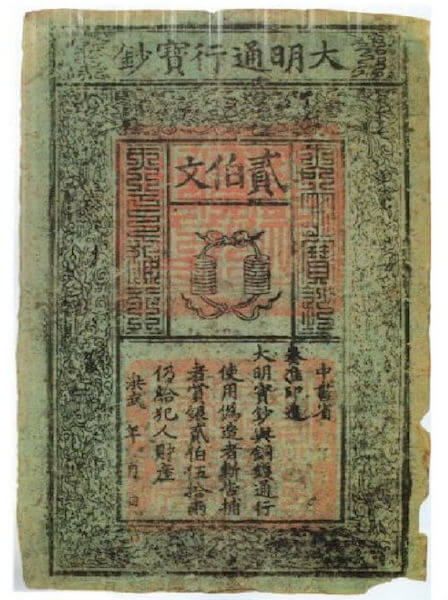
Introducing new ideas or technologies into monetary policies is a matter, as ever, of compromise, and it is often a result of embodied interest. There are always advantages and downsides: do we prefer practicality over security issues; or do we favour transparency over the privacy of citizens. Security and privacy issues often change the tune.
We are facing risks of inflation. Today, some countries have enormous inflation. Did it happen before? What were the biggest ones?
Arguably the most shocking inflations happened in the 20th century. The World wars contributed to those significantly: we can mention Greece and Hungary as examples in the immediate post-WWII period. Nonetheless, Germany’s inflation of 1923 was also terrible – prices doubled every three to four days. WWI reparations were merciless to the German monetary situation. Yugoslavia’s inflation in the early 1990s was also epic. Mementos of these hyperinflations – apart from the terrible trauma of the population who lived through them – still remain in the banknotes of the period: sometimes it can be very hard to count all of the zeroes, e.g., a ten-billion notes were common at the time.
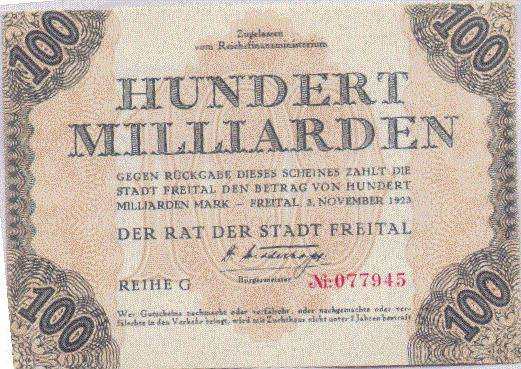
In the Roman Empire inflation could be measured through the quantity of (precious) metals in the coins issued by imperial mints. The coins in a strong economy contained a decent amount of gold. This was slowly replaced by a higher percentage of silver, then copper. In ancient times therefore if one wanted to pump more money into the market (or, more often, into financing troops), one could either issue coins of smaller diameter or reduce the percentage of more precious metals in the coins.
One of the most famous monetary reformers of the Roman Empire, Emperor Diocletian, tried to restrain galloping inflation by fixing standardised gold and silver coins, introducing bronze coins of smaller value, and issuing the Edict of Maximum Prices. This important document regulated maximum prices for some 1,000 articles across the Empire. The most valuable commodities of the time, according to the document, were one pound of purple-dyed silk and a lion – both items valued up to 150,000 denarii. It was an admirable effort, but these measures were both helpful and detrimental. Nobody has managed to save an empire alone anyway.
Could a country become bankrupt in recent centuries?
Humanity has spent a lot of time in the war. Wars bring so much devastation that our first thoughts are most often related to arms, casualties, displacements, refugees, hunger, and suffering. Nonetheless, those who want to win wars first think of how to finance them and how to deliver provisions. Financing wars is always a tremendous effort. It was a huge challenge for rulers who often owed a lot of money to rich individuals. They usually found a way to pay them back through other means: giving them land; trading privileges; monopoly over certain commodities; etc. Many rulers lost their thrones (even heads) because their debt was unbearable or other contenders to the throne had more financial means at their disposal.
In peacetime and modern times countries go bankrupt as well for various reasons, but it rarely happens as modern times developed mechanisms to give loans to those in financial trouble. Long before money appeared, there was debt. Debt is all around us: citizens of all countries have personal and business loans in banks. Almost all countries in the world have loans; the US national debt reached USD24 trillion (24,000,000,000,000) in April 2020. This is more than the debt of the so-called Third World countries combined. It is a debt towards banks, domestic and foreign investors, and others. One can buy and trade with fractions of national debts. However, the connections between indebted governments, their liabilities, and creditors can be rather complex – it is a good topic for another interview by a more competent analyst.
Who were the richest people and how much was their worth?
The richest people are those who feel they have enough. You may say this is a philosophical answer and a pretty dull one, and I cannot agree more. Then again, many essential human achievements require so much of ‘dull’ work. No wonder there are many cartoons and movies that imagine a pill that can skip some thousands of hours of dull training and make (some of) us experts within minutes. There is so much hard work behind pretty much any useful physical or intellectual activity. (Apologies for this red herring, I am often keen to remind my students of Hercules at the crossroads).
Back to the richest people in history: pharaohs, emperors, kings, entrepreneurs, bankers – so many who were both incredibly wealthy and influential. In the Mediterranean world, for many centuries there was a saying ‘wealthy as Croesus’. This unimaginably wealthy Lydian king (6th century BC) arguably was the first ruler to have issued gold coins with standardised purity. Croesus was defeated by another extremely powerful and rich king, Cyrus the Great, who established the Persian Empire, the largest in the world at the time, stretching from the Indus river to the Mediterranean.
In the Roman world, I could single out two figures: Emperor Augustus, and General Marcus L. Crassus who financed Caesar’s ascent, and died when Augustus was a young boy. Crassus was notoriously rich, and he accumulated his riches “by fire and war” (as Plutarch, one of the finest historians, so nicely put it). He was a military commander and entrepreneur who traded in real estate, among other things. He even had his own fire brigade that extinguished fires in Rome depending on Crassus’ interest, i.e. whether or not he planned to buy that estate.
In the common (AD) era, one can mention Emperor Shenzong of the Song Dinasty (11th century); Genghis-khan, the ruler of the largest empire in history (13th century); Mansa Musa I, the King of Mali (14th century) who controlled a considerable cut of the world gold reserves of the period; or Emperor Nicholas II of Russia, whose personal wealth in 1916 is estimated up to 300 billion of today’s US dollars.
Jakob Fugger (1459-1525), merchant, banker, and mining entrepreneur was arguably one of the richest people in history. Some estimates suggest his net worth was several hundred billion in today’s US dollars. This is more than twice as much as today’s wealthiest person, Jeff Bezos, whose wealth has been estimated between USD100 and 200 billion. Of course, this is subject to change, and as early as next year we might be talking about different ratios or the new richest person on the planet.
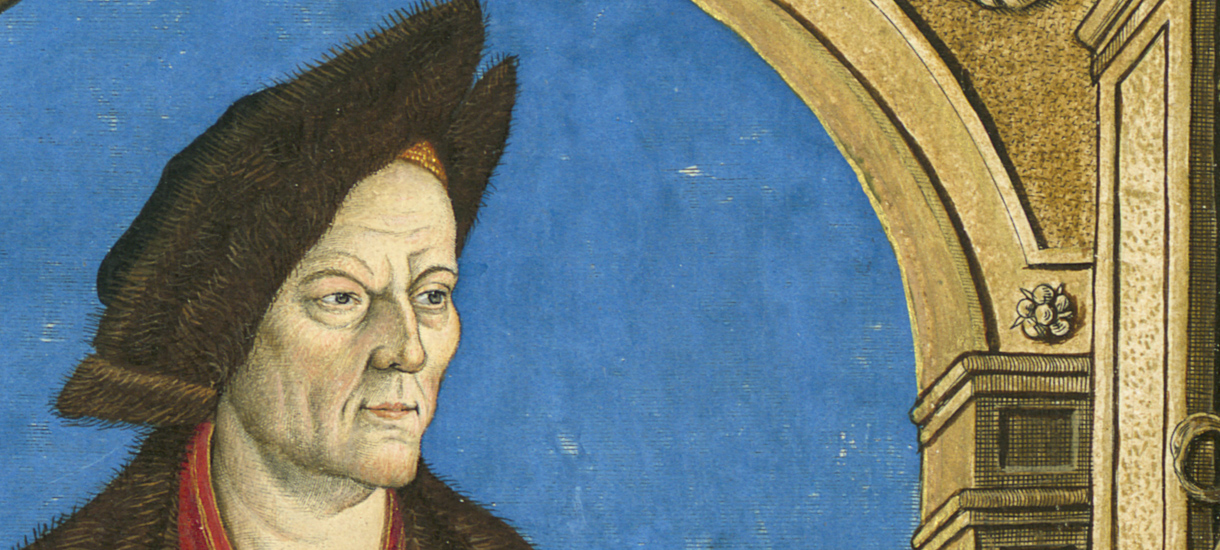
Three contemporaries John D. Rockefeller, Andrew Carnegie, and Henry Ford, made their fabulous fortunes on oil, steel, and cars, respectively. Their fortunes were more than USD100 billion, each. Carnegie gave an amount equivalent to one billion of today’s US dollars just for building public libraries in the United States of America. Rockefeller made huge donations to the church, and for educational and health purposes. At the turn of the 21st century, Bill Gates was for the wealthiest person in the world. He also donated huge amounts to social, educational, and health projects. He has been interested particularly in eradicating poliomyelitis, a disease that weakens muscles, and many have been saved from diseases as a direct consequence of his donations to research on viruses and vaccines.
Enormous amounts of money very often give birth to greed. Financial reports suggest that eight of the wealthiest people today have accumulated the same amount of money as the poorest half of humanity (which is almost four billion people). Two billion people live on several US dollars a day, and reports estimate that, due to the COVID-19 crisis, another half a billion will be pushed into poverty. These differences, which have deepened over the last couple of decades, could be a big challenge to the global society.
Modern Interpretation of History Presented on Klis Fortress
At the foot of the hill where Klis Fortress is located, the long-awaited Interpretation Centre was recently opened. Klis Fortress is one of the most significant symbols of the rich history of that part of Croatia, and the history and the cultural heritage of the area will be presented to visitors through 3D holographic projections, in a unique combination of modern technologies and history, hrturizam.hr writes.
The project includes the illumination of the exteriors of the buildings at the centre of the village with images of well-known locations, as well as the possibility of 3D mapping on the outside walls of the Interpretation Centre which creates attractive visual content without additional interventions in the space.
The idea of the Centre started four years ago when the Klis Municipality applied for the funds for tourist development with the Ministry of Tourism. The value of the adaptation and the turning of the already existing building into the Centre was around one million kuna, and the Ministry and Split-Dalmatia County invested more than the half of the amount.
At the opening of the Centre, Jakov Vetma of the Klis Municipality said that the project allowed them to offer their visitors the added value.
They will be able to learn about the specificities of the region and the history of the region told in a modern way. Klis was the first capital town in Croatia, and has been a seat of Croatian kings for ages. Nowadays, it's going through a tourist boom, having received over 70,000 visitors last year, mostly thanks to the restauration project of the fortress itself, which then became world-famous after some of the worldwide phenomenon Game of Thrones series was filmed there, and the numbers kept increasing: in the first five months of this year, Klis Fortress has seen an increase in the number of visitors by around 60 percent compared to the record-breaking 2018.
The people of Klis are not stopping their development plans here; they're preparing the project of building a summer stage on the fortress, which is worth over five million kuna. The other major project for Klis in the near future is the sale of a very valuable piece of property where an attractive hotel should be built, which should bring more investors and tourists to Klis.
Famed Omiš Factory to Close After 97 Years of Work to Become Hotel
As Poslovni Dnevnik writes on the 24th of May, 2019, a protected three-storey building in the Dalmatian town of Omiš, which operated for 97 years as a factory and was constructed back during Austro-Hungarian rule will be redesigned into no less than a hotel in the next two years.
''The Croatian brand of pasta "Cetina" will remain, we've preserved it, as well as all of the jobs from the pasta factory. Twenty-two workers were taken care of, we've all sorted everyting out,'' Ivica Babić, the owner of the bakery and the sales chain "Babić" stated clearly after being requested to shed light on the situation by Slobodna Dalmacija. As of June the 1st, the former pasta factory in Omiš will end its work, after 97 long years.
Namely, the building on the eastern outskirts of Omiš, located at the mouth of Cetina, next to the town's harbour, will be converted into a hotel and thus end the work of the old factor that was otherwise in operation for almost 100 years.
''Nobody's getting put out of work, there are no dismissals. We've made sure to give jobs to all of our workers according to their respective capabilities, someone will be a driver, another will be a salesman... We've had two requests for severance pay, which we have taken care of properly,'' Babić stated when discussing the fate of employees who worked in the factory, which was sold to Krunoslav Šarić two years ago, but the well-known and popular Dalmatian "manistra" continued to be producted, and it will continue to do so, until the very beginning of next month.
''With our strategic partnership we've ensured that the brand will remain, but now production will be relocated to Čakovec. It was necessary to optimise the production of pasta, and because the "Cetina" building in Omiš was dilapidated, it was necessary to invest large amounts of money in its reconstruction or move the factory from the city centre to a more suitable place for production,'' revealed the boss of the Babić chain, expressing his satisfaction with the fact that they have been able to successfully preserve the brand "Cetina", as well as provide new jobs for the factory's former workers.
Make sure to follow our dedicated business and lifestyle pages for much more.
Journey into the Past with Antiquity Days in Zadar!
Fancy a journey back into times gone by in Zadar? The Roman empire, which once dominated almost all of Europe, left a more than noticeable trace on the old face of Zadar, and while much of that can still be seen in many places in this famous Dalmatian city today, it wouldn't be enough without having an event dedicated to the Roman presence on these shores and more specifically in the City of Zadar.
As you probably already know, Zadar, a highly popular Dalmatian destination for tourists from all over the world, is a city with a very, very long history. A large part of that history is from the formerly glorious Roman period. The old city, traditionally known as ''Poluotok'' is full of Roman ruins.
However, that's not where it all begins and ends when it comes to showcasing Zadar's rich history with its long Roman past. That's where Zadar's Antiquity Days come in, with their interactive approach of reviving the spirit of old Roman times.
Traditionally, local students of archaeology from the University of Zadar have been organising the popular Antiquity Days manifestation in cooperation with the Archaeological Museum of Zadar and other generous sponsors.
The program includes a workshop for children, a treasure hunt, book promotions and much more, all rounded off with the final entertainment program held on Zadar's beautiful Forum.
You can see the full schedule of the program by clicking here.
A small procession through the streets of Poluotok, where the emperor and the empress will say hello to citizens and visitors alike will eventually end up on Zadar's Forum. Gladiator fights, oriental dances and a fire show are also will entertain the crowds. There, the emperor will decide on whether or not Zadar and its citizens have been loyal to the Roman Empire. Make sure to be there and enjoy this trip into Zadar's past!
Make sure to follow our dedicated lifestyle page for much more.
First Croatian Olive Oil for Children - Brachia Kids
There's no denying that Croatian olive oil is second to none, and we're not the only ones who think it. Croatian produce has won award after award and the long coastal traditions of olive growing, picking and harvesting in Croatia are worthy of just as much praise as the final results of that hard work are.
As Morski writes on thr 4th of April, 2019, the respected Brač brand of olive oil, Brachia, has launched Brachia Kids, the first Croatian olive oil made just for children of kindergarten and elementary school age, reports Journal.hr.
''Brachia Kids brings the fresh and intriguing taste of organic olive cultivation from ecological [olive] growing from the island of Brač. These flavours are ideal for children when it comes to falling in love with the taste of olive oil. This new product is intended for parents who understand the healing properties and the great nutritional value(s) of olive oil, and who want to introduce it to their children's diet,'' said Leopold Botteri, the co-manager of the Brachia cooperative.
Part of the main role in popularising the consumption of olive oil for children will also be played by its attractive packaging, which has been made by Izvorka Jurić and Jurica Kos.
''We've designed the packaging so that the product is attractive to children, fun to use, and also educational, in order to develop their awareness of the importance of the regular use of olive oil. The body of a glass vial (0.25 dcl) has been partially placed in a box that, together with the black tip of the bottle, forms a crayon, and within which six crayons are actually housed. Following the dissolution of the box, there is a fun colouring book with illustrations of olive trees and leaves and various tasks for children to complete. Olive oil nourishes the body, and the puzzle and colouring on the packaging, acts as food for the brain. Together, they make a complete product for the healthy development of children,'' explained packaging designer Izvorka Jurić.
In addition to the premium olive oil of Brachia Maslina and the latest Brachia Kids product - Izvorka Jurić has designed products for the lines of Brachia sort oils, ecoBrachia and Brachia & Friends. All of these products, including Brachia Kids' olive oil for children, are now available for purchase in UJE stores across the Republic of Croatia.
Make sure to follow our dedicated Made in Croatia page for much more.
Torpedo - Croatian Invention Which Changed Naval Warfare Forever
At the Croatian Maritime Museum in Split, the most valuable specimens of torpedo weapons have been being exhibited from the world's first torpedo factory, in Rijeka. This British-Croatian invention took the world of naval warfare by storm, and its two creators, one from Rijeka in Croatia and the other from Bolton in England, are being honoured.
As Morski writes on the 30th of March, 2019, the museum's curators Petra Blažević and Ljubomir Radić formed a new museum exhibition of the torpedo collection back in 2016. The occasion was the 150th anniversary of the emergence of torpedoes, which was once the most prominent weapon to have existed in naval warfare, the prototypes of which were created by Giovanni Biagio Luppis Freiherr von Rammer, sometimes also known by the Croatian name of Vukić, a Croat born in Rijeka, who served in the Austro-Hungarian Navy.
We often hear that the torpedo was entirely invented in Croatia, but in terms of international recognition, that honour goes to the the British public, more specifically to Robert Whitehead, an English engineer born in Bolton in northern England, who gained his fame for the development of the very first effective self-propelled naval torpedo.
Luppis, born in Rijeka with family ties to the southern Dalmatian region of Pelješac, had the desire to create the so-called "coast guard,'' which was a self-managed ship loaded with an explosive to protect the coast from attacks coming from the sea. Since he had no funds for the development of such a project, nor did he have the proper engineering knowledge for the task, he connected with the manager of the Rijeka metals factory, Robert Whitehead, a Brit.
From their friendship and cooperation there came a weapon called a torpedo, and how frightening it was to gaze upon this newly-made weapon, French travel writer Victor Tissot testifies, who, after his stay in Rijeka, referred to it as "the most terrible of all sea monsters".
Soon after the ''birth'' of the torpedo, Luppis went to live in Italy and sold his share, production remained in the hands of his friend Robert Whitehead, who was still across the Adriatic sea in his factory in Rijeka. By the end of the 19th century, most of the world's navies started to acquire the Rijeka-made torpedoes and warfare at sea became unthinkable without the use of this weapon, at least until the end of the second world war.
As a natural continuation of the valorisation of this truly outstanding torpedo collection, which has been inherited by the Croatian Maritime Museum in Split, the authors of the exhibition have created a book with a catalog of the collections.
''Both the exhibition and the book bring out the historical context of the torpedo's creation, the biographies of both Luppis and Whitehead, and a series of interesting uses of torpedoes on torpedo boats. The bilingual book, which in honour of the torpedo's British and Croatian creators, has been published in Croatian and English, was promoted to the public back in February at the Nikola Tesla Technical Museum in Zagreb and then again in March in Split,'' said Radić.
Make sure to follow our dedicated lifestyle page for more on Croatian history, inventions, heritage, and much more.



